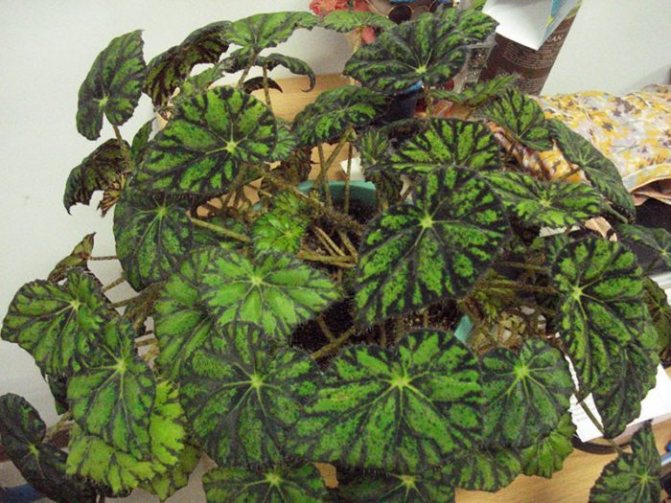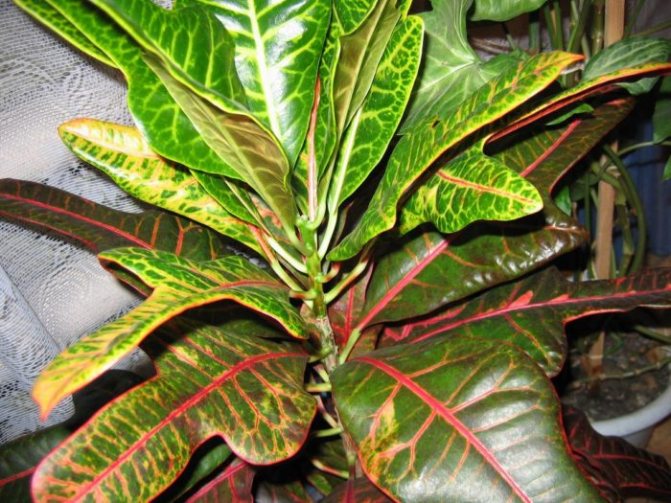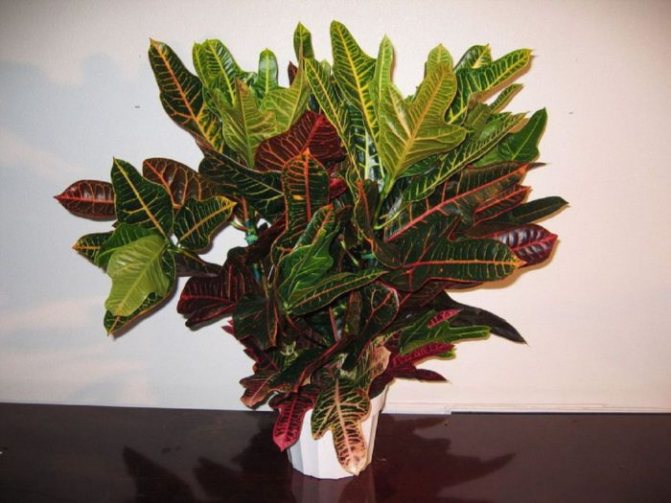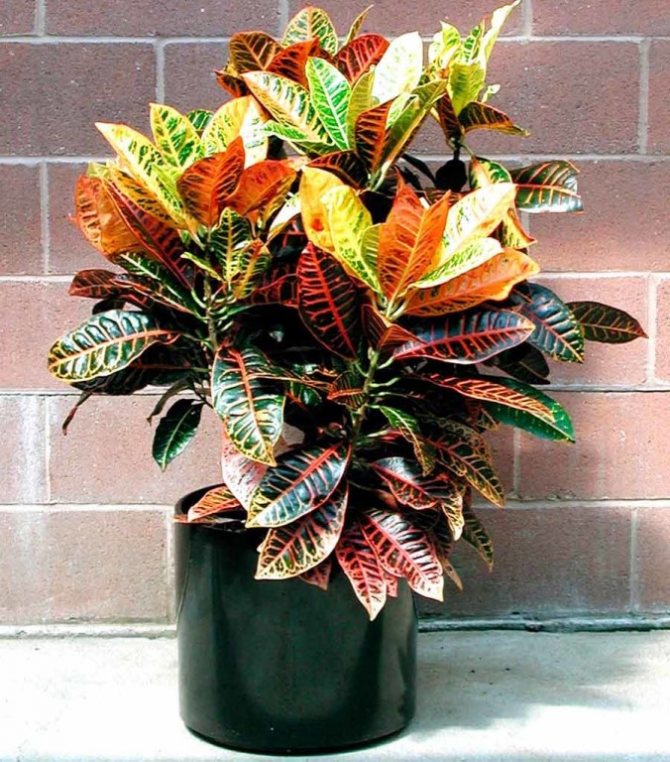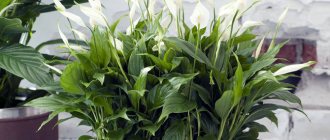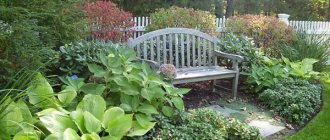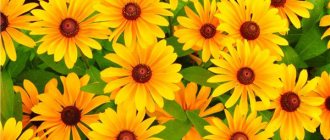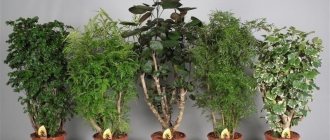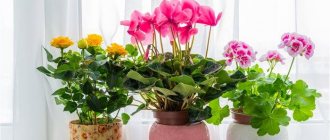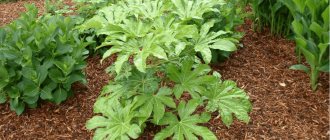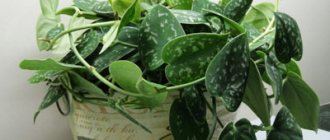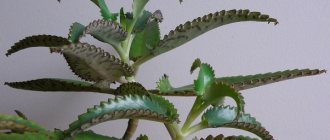Almost every home has a dark place that you want to make cozy and revive. This could be a corridor, a bathroom, or a living room with windows facing the shady side. One way to solve this problem is to place indoor plants in a dark corner. But here an obstacle arises, since light is vital for any plants, it is he who provides the process of photosynthesis, and it is thanks to him that they develop. However, different types of plants require different amounts of sunlight. According to this criterion, they are classified into light-loving, shade-tolerant and shade-loving. For the latter species, an excess of sunlight is not only undesirable, but also destructive. It is these plants that are most suitable for growing in shaded areas. Under natural conditions, they grow under the crowns of tall trees in shady forests, and therefore have adapted to low light.
The main features of shade-loving plants
Most of the shade-loving representatives of the flora are plants with dark green leaves. They rarely bloom. The darker the leaves of a shade-loving plant, the more it loves darkness. Under the influence of light, their leaves fade and brighten, spots appear on their surface. However, it should be borne in mind that even such plants require some amount of diffused light. With a lack of it, a plant that loves shade will not bloom. At home, for the proper development of such plants, natural lighting in the room during the daytime should be approximately the same in which you cannot read and write. They need to be placed a few meters from the north window or at a greater distance from a well-lit window, for example, on bookshelves or on special stands. Large plants can be placed on the floor.
What is light for?
We perceive that light is necessary for plants as an axiom, sometimes without thinking about its global significance in the lives of our green friends. The answer lies on the surface. And why, in fact, are plants green? And here we immediately remember about chlorophyll, which is the basis of their body. A huge mass of green pigment that captures life-giving rays with each chlorophyll grain, without further ado, proves the invaluable value of light.
Photosynthesis is that amazing property, also called air nutrition of plants, which allows them to do without organic matter. Only plants can synthesize everything they need from practically nothing: water and carbon dioxide, with the addition of only a small amount of mineral salts. But for this magic to work, light is needed.
Only if there is sufficient illumination for plants, all of its life processes can be carried out. Very often, worrying about the unhealthy appearance of an indoor flower, we try to help him with additional fertilization, spraying with growth stimulants. But first of all, you need to pay attention to the degree of lighting for indoor plants. Nothing can make up for its deficiency. Moreover, a sufficient amount of water, carbon dioxide and mineral elements simply cannot be assimilated without light! Therefore, the lack of this most important factor leads to a weakening of the defenses, cessation of flowering, slowdown or complete cessation of growth, and even death of the plant.
Caring for shade-loving plants
In general, shade-loving plants are quite unpretentious. The specificity of care in each case is determined by the characteristics of the species. A general requirement for all species is the need for moderate watering. Excess moisture is detrimental to the plant, but the top layer of the earth must always remain slightly moist. It is advisable to spray them from time to time, and some require special adaptations such as drainage and moss. Drying and curling of the tips are signs of insufficient moisture. Fading in color indicates a lack of light. In this case, you can put a lamp near the pot. The appearance of yellowness indicates that rotting processes are taking place near the root. Another important point is maintaining the purity of the plant. Shade-loving plants already receive little light, and when they are covered with dust, the rays penetrate the foliage even more weakly. Therefore, it is extremely important for them to keep clean. To do this, you need to often wipe the leaves with a cloth dampened in water, removing dust. Shade-loving plants grow quickly, but for this they need to create favorable conditions.
Key points [edit | edit code]
Sunlight is essential for the survival of all plants, with the exception of a few species. However, quantitatively, high illumination intensity does not always contribute to the normal development of plants. With a lack of water in the soil and moisture in the atmosphere, it is easier for plants to exist in shaded habitats than in the open sun.
Plants absorb light energy mainly from the violet-blue and partly red zones of the visible light spectral range. Light radiation in the red range is mostly absorbed by light-loving plants that form the upper tiers of forests, but near infrared radiation penetrates through the foliage to the plants that form the lower tiers. Shade-tolerant plants inhabiting here are able to absorb light from the extreme red zone of the spectrum (with a wavelength of 730 nm) [6].
However, less light means less energy is available to the plants. Just as a lack of moisture is a limiting factor in plant growth and survival in a sunny and dry environment, in shady habitats the limiting factor is usually a lack of solar energy.
The absorption of nutrients by plants often differs between those living in the shade and in a sunny place. Shading usually comes from the trees that form the upper tiers of the forest. This leads to differences in soils, which in forests are regularly enriched with nutrients from the decomposition products of discarded foliage. Compared to forest soils, the soils of sunny habitats of the same climatic zone are usually poorer. Shade-tolerant plants, in comparison with light-loving plants, are better adapted for greater assimilation of nutrients; and shade tolerance as such depends to some extent on soil fertility [6].
Differences between shade-loving and shade-tolerant plants
Greening the interior of the premises at a distance from the windows can be carried out using both shade-loving and shade-tolerant plants. Many do not see much of a difference between the two. However, despite the fact that both plant species are able to adapt to low light, they differ significantly from each other. Shade-tolerant crops tolerate bright lighting, shade, and partial shade equally well. They love exposure to sunlight, but the lack of lighting does not have a detrimental effect on them. Shade-loving crops, on the other hand, cannot grow in illuminated places and prefer to constantly remain in the shade. They perfectly tolerate the lack of normal light in the apartment.
How can we help our pets?
By examining the needs of each of the types of indoor plants you have, you can develop a specific strategy to achieve the optimal light regime for each of them. We are able to create suitable conditions for those who decorate our lives:
- adding artificial lighting for plants that need more light;
- reducing the duration of coverage for short-day lovers;
- shading flowers in direct sunlight;
- when purchasing flowers, pay attention to their light needs, do you have the opportunity to provide them in the required measure;
- choosing the most suitable place in the apartment for each flower.
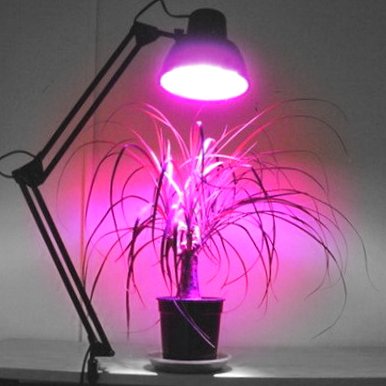
It should always be remembered that light is the basis for a plant. Only by providing him with acceptable light conditions, you can count on the flower's life will be long and beautiful. The most popular and most effective today are LED phytolamps. Their action is based on a combination of red and blue rays. Thus, an imitation of sunlight is created, as close as possible to natural. Plants grow and develop much better under such rays. When choosing a phytolamp, you should pay attention to such a moment as the heating of the lamp. It is clear that it should not heat up too much, so as not to destroy delicate young plants. And older plants can get burned or dry out under hot rays. It is also necessary to decide for yourself what exactly needs to be stimulated in plants. If this is growth, then it is better to purchase a blue spectrum lamp. If it is necessary to influence flowering or fruiting, then a red spectrum is needed. Thus, using phytolamps, you can not only help flowers and seedlings develop normally, but also additionally affect any of the stages of development. In the event that you are a fan of indoor plants or are engaged in gardening, you cannot do without a phytolamp.
Characteristic features of shade-loving plants
As noted above, the main feature that distinguishes shade-loving crops from shade-tolerant ones is the complete intolerance to sunlight. First of all, foliage suffers from them. Under natural conditions, they grow only in full shade under the crowns of trees or under rocks. In addition, shade-loving plants need fertile soil rich in nutrients. They need to be fertilized regularly to compensate for the lack of sunlight. There are shade-loving plants with graceful lush crowns that bloom very beautifully. But if you take into account the ease of maintenance, it is easiest to grow plants that do not bloom, since they are less demanding to care for.
Indoor plant lighting
Ever since school, we know that plants need sunlight for normal development. Unfortunately, the climate in our country is such that sunlight, at times, is not enough for plants. Very often, indoor plants suffer from a lack of light. Indeed, among them there are those who need bright light. There is even a lack of light in summer, let alone winter. In addition, many gardeners already at the end of winter begin to plant seedlings on their windowsills, and it is necessary to help young plants develop normally. Many modern flower growers know and successfully use phytolamps for plants for this purpose, which fully replace sunlight where it is lacking.
The basis of life on Earth is the energy of the Sun. Therefore, lighting for indoor plants plays an important role, along with water and temperature conditions. But if the lack of heat is sometimes tolerated by flowers well, moisture can be stored in their tissues, then the lack of sunlight is most painfully tolerated.
Sunlight is one of the most important environmental indicators for plant life.It is absorbed by chlorophyll and used in the construction of primary organic matter.
The main characteristics of light are its spectral composition, intensity, daily and seasonal dynamics.


In terms of spectral composition, sunlight is heterogeneous. It includes rays of different wavelengths. Of the entire spectrum, photosynthetic active (380-710 nm) and physiologically active radiation (300-800 nm) are important for plant life.
Moreover, the most important are red (720-600 nm) and orange rays (620-595 nm). They are the main suppliers of energy for photosynthesis and affect the processes associated with a change in the rate of plant development (an excess of the red and orange components of the spectrum delays the plant's transition to flowering).
Blue and violet (490-380nm) rays, in addition to directly participating in photosynthesis, stimulate the formation of proteins and regulate the rate of plant development. In plants living in nature under short-day conditions, these rays accelerate the onset of the flowering period.
Ultraviolet rays with a wavelength of 315-380 nm delay the "stretching" of plants and stimulate the synthesis of some vitamins, and ultraviolet rays with a wavelength of 280-315 nm increase cold resistance.
Only yellow (595-565 nm) and green (565-490 nm) do not play a special role in plant life.
Taking into account the needs of plants in a certain spectral composition of light is necessary with the correct selection of artificial lighting sources. In room conditions, as such, it is most convenient to use fluorescent lamps LB and LDC.
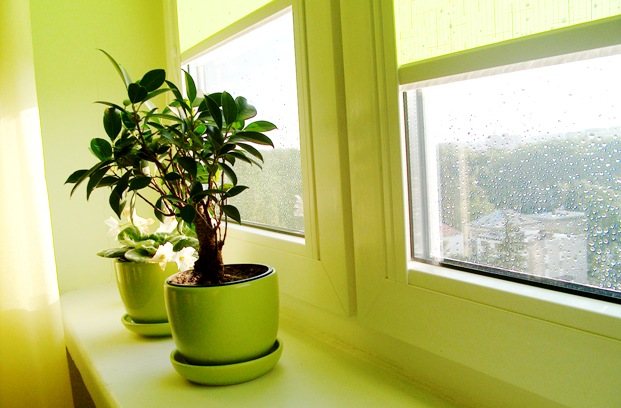

Almost all indoor plants are light-requiring, i.e. develop better in full lighting, but differ in shade tolerance. Taking into account the attitude of plants to light, it is customary to subdivide them into three main groups: light-loving, shade-tolerant and shade-indifferent.
Like all living organisms, plants have the ability to adapt to changing conditions. This ability is different for different species. There are plants that quite easily adapt to sufficient or excessive light, but there are also those that develop well only under strictly defined illumination parameters. As a result of adaptation of the plant to low illumination, its appearance changes somewhat. The leaves turn dark green and slightly increase in size (linear leaves lengthen and become narrower), the stem internodes begin to stretch, which at the same time loses its strength. Then their growth gradually decreases, because the production of products of photosynthesis, going to the foreign bodies of the plant, is sharply reduced. With a lack of light, many plants stop blooming.
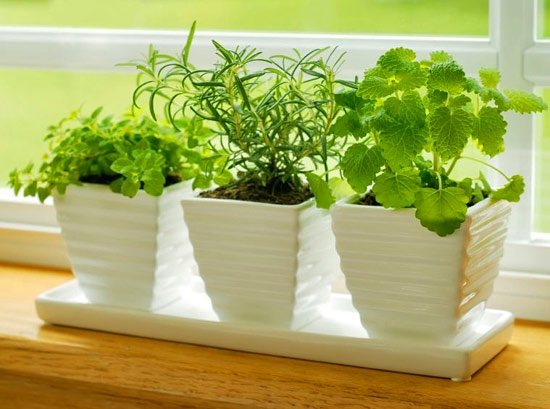

With an excess of light
chlorophyll is partially destroyed and the color of the leaves turns yellow-green. In strong light, plant growth slows down, they turn out to be more squat with short internodes and wide short leaves.
The appearance of a bronze-yellow color of the leaves indicates a significant excess of light, which is harmful to plants. Burns may occur if the appropriate measures are not taken urgently.
Diurnal and seasonal dynamics are important characteristics of the light regime.
The length of daylight hours varies throughout the year. In temperate latitudes, the shortest day is 8 hours, and the longest is more than 16 hours.
Read on: backlighting indoor plants
Diversity of shade-loving cultures
The ability of shade-loving plants to adapt to low light allows them to be used to decorate bathrooms, study rooms, bedrooms, and other recreation areas in apartments. Despite the fact that shade-loving crops are versatile, unpretentious and functional, many consider them the most boring group of indoor plants. In fact, they are the ones that are distinguished by the greatest variety of textures.If you move them just a few decimeters from the place where they were located for a long time, you can notice changes in the shade of the color of the leaf plates or the intensity of the patterns on the leaves. The number of varieties of shade-loving plants is very large. Some of the more popular shade-loving plant varieties are described below.
Violations of the light regime
One of the most common reasons for the slow dying of fairly unpretentious indoor plants is a lack of light. By lack of light, we mean both insufficient daylight hours and insufficient illumination intensity. As already mentioned, light is the only source of energy available to green plants, providing all the functions of their body. Therefore, illumination below the species-specific threshold inevitably leads to the death of the plant. Naturally, the plant does not die immediately. First, the natural color of the leaves changes - young leaves grow paler and smaller than usual, the variegated ones lose the brightness of the pattern, the variegated leaves turn green, the lower leaves turn yellow. Ugly stretching of shoots occurs due to excessive elongation of internodes, and flowering is much more scarce: fewer flowers are formed, and they are smaller in size. Then the plant stops growing, flowering does not occur at all, the lower leaves turn yellow, dry up and fall off. And only after that the plant finally dies. Young plants are most sensitive to a lack of light.
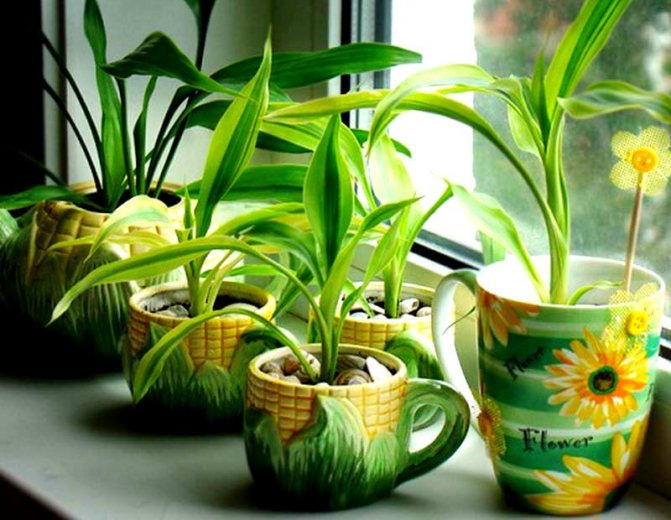

Older specimens with a well-developed root system are more stable in conditions of a lack of light, since at a low level of photosynthesis they can use the reserves of nutrients accumulated in the roots for some time. But with a constant lack of lighting for several months, they inevitably die.
An excess of light also belongs to violations of the light regime. For many plants, exposure to direct sunlight for several hours in the spring or summer can also cause damage or even death. This applies, of course, to shade-loving plants - selaginella, ferns, arrowroots, etc.
Violation of the light regime is not limited only to an excess or lack of light.
For some plant species, both the frequency and duration of illumination are an important factor. Plants in our latitudes, as a rule, need a long day of light, 12-16 hours. Plants of tropical origin are used to shorter daylight hours - 12 hours of light is enough for them. For plants such as poinsettias, the duration of the light is key for bud setting and flowering: they only flower after 8 weeks of short daylight hours, when the night lasts 14 hours; but for this, the plant should be covered with a dense, light-blocking bag.
Chronic light deficiency
Signs that the plant is chronically lacking in light may be different, but the young shoots that form under these conditions are the first to suffer. Their leaf blades become pale in color, the internodes lengthen, and the size of the leaf blade decreases.
For some species, in low light, juvenile leaves are characteristic. So, at a young age, a well-known gourmet monstera develops heart-shaped whole-edged uncut leaves, over the years new leaves appear, increasingly larger, which acquire an increasingly bizarre shape. First, deep cuts appear along the edge of the plate, and then, when the leaves become even larger, they are decorated with closed holes along the central vein. With a chronic lack of light, monstera have small, simple leaves without holes, and it loses all its decorative effect.


Ornamental deciduous plants, such as arrowroots, zebrins, calatheas, which do not require direct sunlight for their content, with a lack of light, still lose most of their attractiveness: their bright spots and stripes fade and lose contrast. The color saturation of coleus also depends on the quality of lighting: a lack of light leads to the fact that even in young plants the stem is bare from below, and the leaves are not as bright as in good lighting. The loss of decorative leaf color in variegated forms of croton, cordilina, dracaena, episia, pineapple, caladium in most cases is caused precisely by a lack of light. In this case, it is not necessary to immediately expose the affected plants to direct sunlight - this extreme is also harmful. As a rule, such plants need moderately bright diffused light.
The unusually decorative leaves of ginura, netcreasia, irezina, hemigraphis, with a lack of lighting, lose their rich purple-violet color, turn pale or completely turn green. In variegated plants: ivy, euonymus, variegated forms of ficuses, privet, scindaptus, syngonium, hypoesthesia - their decorative spots and stripes completely disappear. Shoots grown with a strong lack of light may turn out to be just green.
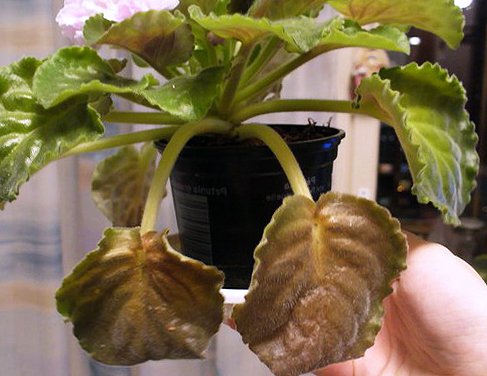

An example of a lack of light
Without sufficient lighting, the flowering of many indoor plants is impossible: azaleas, gardenias, orchids, oleanders, mimosas, balsams, fuchsias, chrysanthemums, bells.
Poor lighting causes poor or late flowering of indoor plants. So, if at least occasionally sunlight falls on pelargonium during the winter, then it blooms much earlier and blooms much more abundantly than plants standing in the back of the room or on the northern window.
But most of all, cacti, lithops and other succulent plants (agaves, milkweed, aloe, fat women, sedums) suffer from a chronic lack of light. Their stems are stretched out, flowering stops, the plants lose their decorative effect, and eventually death occurs. Desert cacti, lithops, konophytums, some fatty plants need very good lighting - the hot sun has a beneficial effect on their growth and flowering, and a sunny location is a necessary condition for their culture. For these plants, even a bright diffused light is not enough, it is necessary that the sun falls on them. But attention! After a long northern winter, the hot spring rays of the high-standing sun at first must be scattered with slight shading, otherwise the plants will receive sunburn. In addition, it is known that plants obtained from nurseries may not be accustomed to direct sunlight at all - if they are immediately exposed to the sun, they will receive severe burns. They must be taught to the direct sun very gradually.
Other succulents grow well on east windows. This applies to Gasteria, aloe, Kalanchoe, Haworthia, stonecrop, Iids with green stems that are not protected by a waxy bloom or hair.
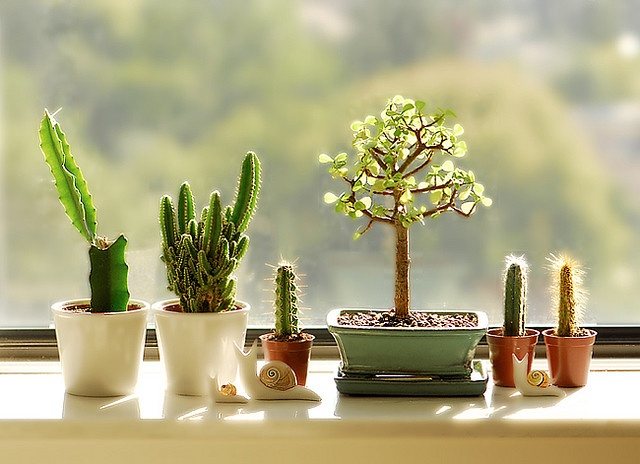

A small short-term lack of illumination can be compensated by slightly lowering the air temperature in the room. There is a rule: the less illuminated the plants, the lower the temperature should be. Of course, it is possible to reduce the temperature in the room only within reasonable limits, as a rule, not lower than 14–12 ℃, in rare cases - up to 8 ℃.
It is much more effective to rearrange the plants in a brighter place or arrange additional lighting for them. The lighting needs of most indoor plants are between 500 and 2000 lux. With the help of special light sources that most closely match daylight, even in dark corners of the house for plants, it is possible to create quite satisfactory conditions for growth.Ordinary incandescent lamps are poorly suited for these purposes - there are too many red, orange and infrared rays in their spectrum, which accelerate vertical growth, so plants stretch out under incandescent lamps. The predominance towards ultraviolet rays slows down plant growth too much. Optimal is the spectrum of daylight, which ranges from ultraviolet, through the visible, to infrared rays. These conditions are met by fluorescent lamps, special lamps for growing plants, they only need to be installed correctly.
It should be remembered that the illumination decreases in proportion to the distance of the illuminated surface from the lamp, therefore, depending on the lamp power, the plant should be close to the light source. If traces of burns appear on the leaves, then the lamps are hung too low; elongated stems and pale leaves indicate that the light source is too far away.
Excessive illumination
Despite the fact that the light level in our homes is much lower than outside, indoor plants can suffer from excessive light. So, an incorrectly chosen place for a plant can lead to damage due to excessive illumination.
Most often, excessive illumination in rooms is on the windows of the southern exposure, especially on high floors. Such lighting conditions are suitable only for the most light-loving plants (lithops, desert cacti and some other extremely light-loving plants), and even then, after a long winter, these plants must first be slightly shaded from direct sunlight with a layer of gauze or translucent paper. But even these plants will suffer from strong overheating of the roots, therefore, in the hot summer months, pots with succulents are placed in a layer of expanded clay to protect the roots from a sharp rise in temperature and a rapid drying out of the soil clod.
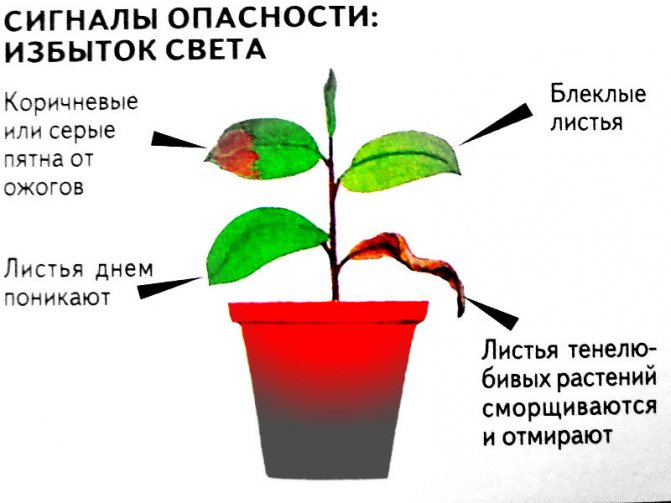

For plants that prefer bright, but diffused light, the scorching rays of the direct sun will cause damage. First of all, a burn appears on the surface of the plants: brown or gray spots on the leaves. With excessive insolation, the leaves of plants become faded or too light, as if fading. In this case, the plants are removed at a sufficient distance from the window or shaded with a curtain from direct sunlight. For plants of this group, windowsills of the eastern or western exposure are preferred, where the sun's rays fall at the beginning or at the end of the day, when they are not so scorching.
Shade-loving plants (arrowroots, calatheas, stromants, ctenants, some ferns) can be damaged even by short-term direct sunlight, especially in spring. The first sign of damage caused by direct sun exposure is often a curling of the leaf blade along the central vein. Then the leaves of these plants, practically not protected from the evaporation of excess water, lose their turgor, and the damage becomes irreversible. However, even after this, damaged arrowroots should not be thrown away - most of them have thick rhizomes that store nutrients. If these rhizomes are protected from drying out with a damp hood and placed in a warm place, then, most likely, in a few weeks or months, new shoots will appear from their dormant buds, and the plant will recover. If you were able to capture the process of sun damage at the very beginning, you should immediately remove the plants from direct sun, protect them from excessive dryness of the air and spray with warm (25-30 ℃) water.
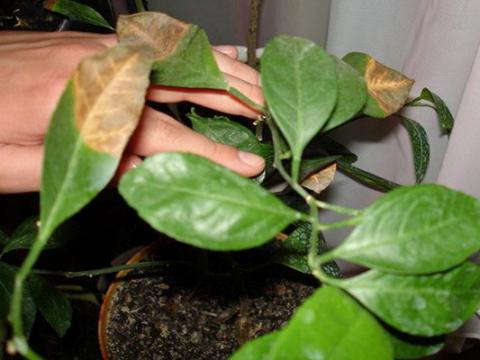

For shade-loving plants, you need to choose a place where they would receive sufficient (500-800 lux), but diffused light. The most suitable place for them is near a window not illuminated by the sun or away from a well-lit window at a distance of 1.5–2.5 m.
A sharp increase in light levels can also damage the plant, even if the plant is photophilous. If you transfer plants from a darker place to the burning rays of the sun, then a burn is almost inevitable. So, even a very hardy and light-loving sansevier can get a sunburn (it looks like light, sharply outlined, gradually drying out spots on the leaves). Accustom the plant to high light intensity gradually, especially in the spring, when the light rises very sharply. If your window is facing south, then in late March - early April direct solar insolation can damage everything, even the most light-loving plants. Look for plants with delicate, unprotected cuticles or pubescence. In such cases, a light tulle curtain on the window, translucent paper, gauze attached to the glass helps.
First of all, young plants, seedlings, freshly rooted cuttings suffer from direct sunlight. They should receive only diffused light. In sunny weather, in spring and summer, indoor plants should be watered only in the early morning, and preferably in the evening. Watering in the daytime, in the sun, is practically useless, since water evaporates from the soil without getting into the plants. In addition, drops of water accidentally falling on the leaves of the plant, like tiny magnifying glasses, focus the sun's rays and cause burns. For the same reason, it is absolutely unacceptable to spray plants in direct sunlight.
Dracaena Sander
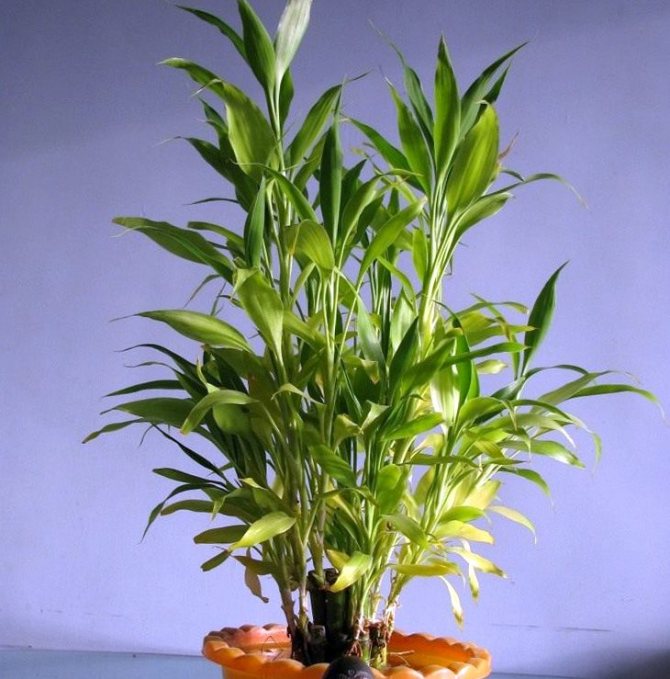

This plant is one of the easiest to maintain and thrives in low light conditions. Its other name is "lucky bamboo". Dracaena Sandera feels good in the dark, but she needs some light. This plant is quite popular due to the ability to create various decorative forms from its stem (usually a spiral). When moving a lucky bamboo to a more lighted or less lighted place, you need to do it smoothly, moving it a little bit daily. Dracaena leaves in a dark place acquire a light green tint.
Is light equally important to everyone?
In nature, plants exist in different living conditions: in open spaces of steppes and deserts, in the lacy shade of temperate forests, under a dense canopy of a tropical forest. Our home flowers come from the wild. Therefore, the lighting of indoor plants should approximately correspond to that which they received in their natural environment.
Plants are divided into three main groups, depending on their need for light: light-loving, shade-tolerant and plants that are content with moderate lighting (shade-indifferent).
- Most of the plants are light-loving. These include all, without exception, cacti and other succulent plants, which are home to sun-drenched deserts. Among them there are many inhabitants of swamps (for example, cyperus) who are also used to growing in good light conditions. Many plants native to the subtropics are also photophilous. The most famous of them are abutilon, coleus, lemon, pelargonium, palms, netcreasia, tradescantia, ficus, chrysanthemum, chlorophytum (variegated varieties), cyclamen. Not every apartment can boast of having enough light for them.
- Among indoor flowers that have a moderate need for light, often called asparagus, hibiscus, dracaena, clivia, monstera, scindapsus, sentpolia, sansiviera, streletia, philodendron, hoya, chlorophytum (with completely green leaves), epiphyllum. Lighting for indoor flowers in this group should be sufficiently intense, but it is better to avoid direct sunlight. They also put up with a little shading.
- Shade-tolerant plants (also called shade-loving) are easily distinguished by their wide and rather fleshy dark green leaves.Of these, the most famous are aspidistra, anthurium, begonia (some of its varieties), balsam, diphenbachia, arrowroot, ivy, cissus, nephrolepis and other ferns. Accustomed to living in their homeland in conditions of a lack of light, in our apartments, as a rule, also having a lack of it, these plants feel good.
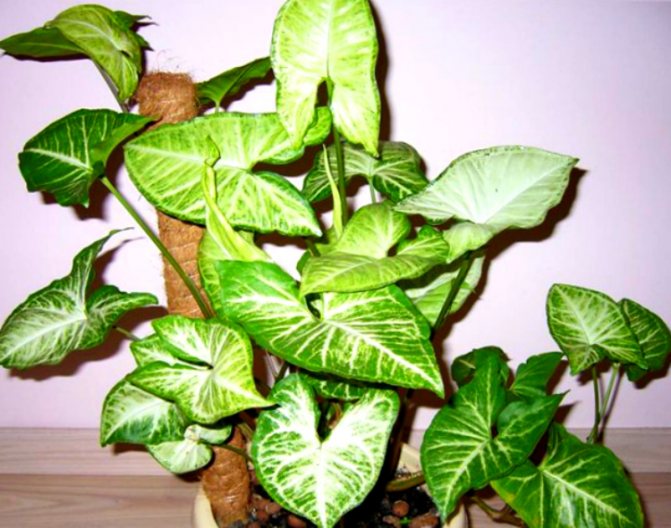

Syngonium - shade-tolerant plant
We usually select flowers for our apartments based on what kind of lighting conditions we can provide for indoor plants. The light-loving ones feel best in rooms with south-facing windows. For shadow-indifferent rooms, rooms facing west and south-west or east and southeast are optimal. Shade-tolerant rooms are preferred, oriented to the west or east. They can also grow on the north window.
Aspidistra
Aspidistra at the initial stage of development has an unassuming appearance, but after it grows, it turns into an elegant interior decoration. One of the main advantages of aspidistra is its simplicity, which makes it very easy to care for. Aspidistra is suitable for those who do not have time to care for plants. This plant perfectly tolerates dry air, almost does not need fertilization and feels quite comfortable in a room with polluted air. It does not require frequent watering and does not suffer from either a lack or an excess of moisture. Aspidistra is great for decorating rooms with variable temperature conditions and low light. The only thing that has a detrimental effect on this culture is direct sunlight, which burns its sensitive and thin leaves, which is why they turn yellow, curl and fall off. Therefore, the aspidistra can be kept anywhere, with the exception of the windowsill. Recently, it has become fashionable to combine this culture with wicker furniture.
Sun-loving indoor plants with names
These home flowers need a lot of sun. Everyone feels great on the southern windows and next to them.
Cacti (Cactaceae)
What water to water indoor flowers
The huge family of perennial flowering plants includes 127 genera and 1750 species. They all come from the deserts. Almost all are stem succulents, characterized by extremely slow growth and the ability to accumulate a large amount of moisture inside. For the normal development and laying of flower buds, they need very bright sun and even heat. But even in partial shade on the northern side, the cactus will be able to survive for a long time.
Crassula
The second name is a fat woman, and they also like to call it a money tree. It is considered a good tradition in the family to keep her in sight. The succulent plant has thick, fleshy leaves of a rounded shape and easily forms an excellent tree crown.
Note! On the eastern, southern and western windowsills it feels good, it can even please with flowering, which is not particularly beautiful.
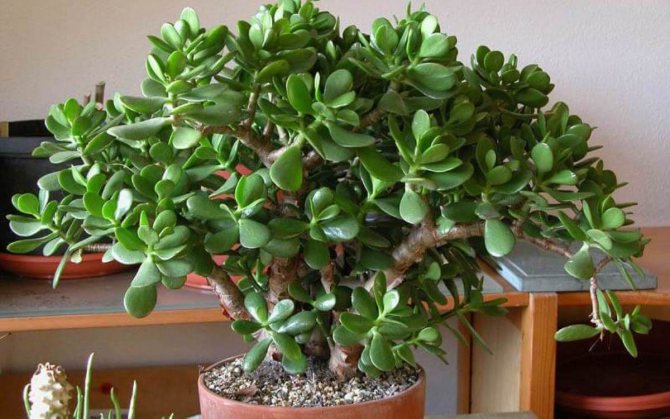

Adult Crassula
Ficus
Belongs to the Mulberry family. In room culture, only evergreen varieties of ficuses are grown. They need bright light all year round. To preserve the decorative appearance in winter, provide backlighting. The most light-loving variegated varieties that require up to 15 hours of sun per day.


Very large leaves - a visiting card of ficus
Aloe
A perennial herbaceous, tree-like or shrub succulent with long thorny leaves filled with valuable and medicinal sap, belongs to the Asphodel family. In total, there are 500 species found in Africa and Arabia. In some species, the leaf grows up to 60 cm in length. Undemanding to care. For most of the year, he feels good at normal room temperature, likes frequent watering. In winter, backlighting is required, watering is reduced, and the temperature can be lowered to 14 ° C.
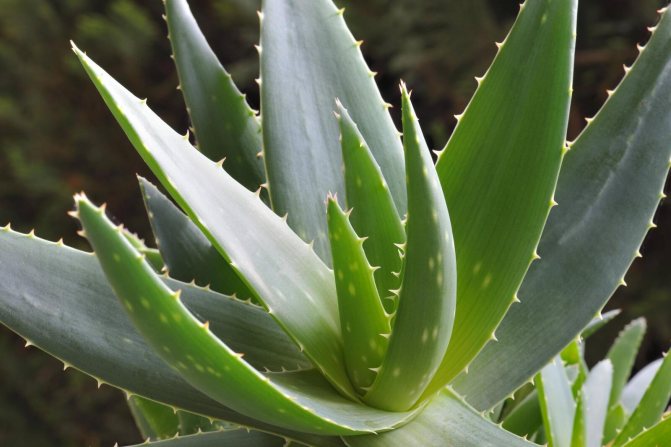

Useful and unpretentious aloe succulent
Sansevieria
A stemless evergreen perennial herb belonging to the Asparagus family. It is very unpretentious, it can grow in bright sun and partial shade, and is valued for its ability to absorb carbon dioxide from the air at night and harmful substances during the day.
Important! Even a flower forgotten for half a month on the loggia will endure such a test without much damage.
Looks especially impressive in flower arrangements. There are varieties with a uniform green color of leaves, variegated, with a yellow edge.
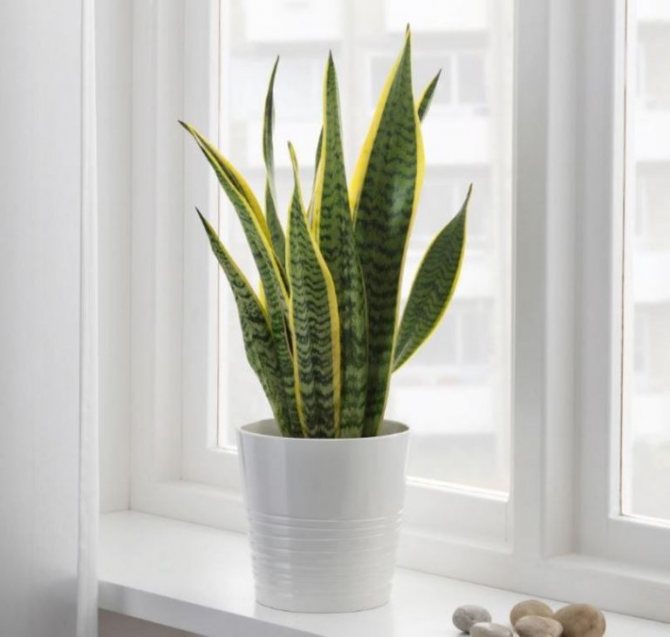

Sansevieria, various varieties
Chlorophytum
This plant is unpretentious and blooms with white flowers. In the summertime, it must be watered abundantly twice a week and sprayed regularly. In winter, watering once a week is sufficient. Chlorophytum perfectly purifies the air by absorbing carbon dioxide and formaldehyde and releasing oxygen. It feels best in partial shade; in a completely dark room, chlorophytum loses its white stripes on the leaves.
Indoor plants that love direct sunlight without spraying
Many home flowers need to periodically moisturize their leaves or maintain high humidity. For those who cannot devote a lot of time to plants, species that prefer arid content are suitable.
Dollar tree, or zamioculcas (Zamioculcas)
Home indoor flowers blooming all year round
One single species that originates from Africa and belongs to the Aroid family. A heat-loving plant prefers a temperature of 18-26 ° C. It easily tolerates drought and does not need air humidification. Water only after the soil is completely dry.
Note! It can grow in partial shade, but it acquires its spectacular appearance with shiny leaves only in bright sun.


Zamioculcas
Kalanchoe
A succulent from the Tolstyankov family with bare or pubescent leaves, on which buds often grow, giving new plants (babies). There are about 200 species in total. Some have the appearance of dwarf shrubs, others are herbaceous. The inflorescence grows on thick stems and looks like an umbrella of white, yellow, purple or red shades.
A large amount of bright light is the main condition for proper development and beautiful flowering. For most of the year, he feels well in an apartment at a temperature of 18-26 ° C, but in winter it needs a rest period at 14-16 ° C. Can grow without spraying. Watering is recommended through the pallet and very sparingly.
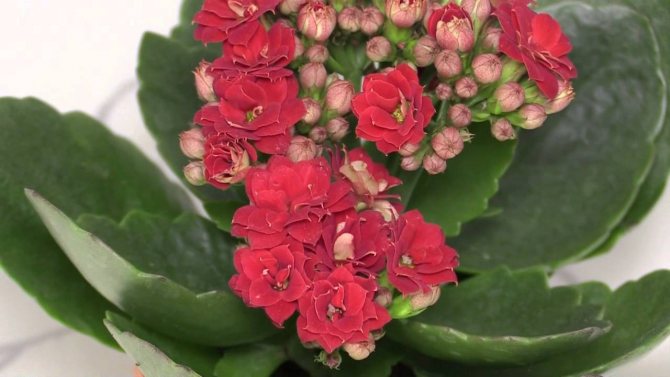

Blooming Kalanchoe
Pelargonium
A perennial herb or shrub native to South Africa. The stems can be straight or creeping. The flower has a simple palmate or finger-dissected leaf with pubescence. It is very similar to geranium, but it has a genetic difference.
For your information! Crossing by pollination of geranium and pelargonium will not produce viable seeds.
It grows well in flower beds, window sills, in hanging pots. It blooms even at 12 ° C. The flower, unlike the geranium, has five petals, two of which are larger than the others. Umbrella inflorescence unites many corollas.
Important! Pelargonium is never blue.
Drives up to 20 inflorescences per season. Loves the influx of fresh air. Due to the lack of lighting, it quickly loses its decorative effect. Most of the year it is kept at a temperature of 20-25 ° C, but in winter it needs a rest period at a temperature of about 12-15 ° C during the day and up to 6 ° C at night. The lush crown is periodically shaped and rejuvenated.


Pink pelargonium
Indoor ivy (Hedera)
The evergreen climbing shrub belongs to the Araliev family. The shoots have sucker-like roots that are easily attached to any suitable support. Scourges can reach a length of 30 m. Leathery, glabrous and shiny leaves are dark green and variegated in color with yellow spots.
Important! The flower should not be often transferred from place to place, this has a bad effect on it.
In summer, the optimum temperature for it is 22-24 ° C, and in winter 12-14 ° C. Very hygrophilous, the soil in the pot should always be moist. He can do without spraying, but then he needs to arrange bathing under a warm shower from time to time. Top dressing is carried out 2 times a week. It reproduces extremely easily, it is enough to cut off the shoot and stick it into a container with nutritious soil.
Among the colossal variety of decorative home flowers that love the sun, everyone can find a suitable option for themselves. Do not be afraid of experiments, but before buying for your home, it is still worth clarifying which particular plant you like requires humidity, illumination and temperature.
Spathiphyllum
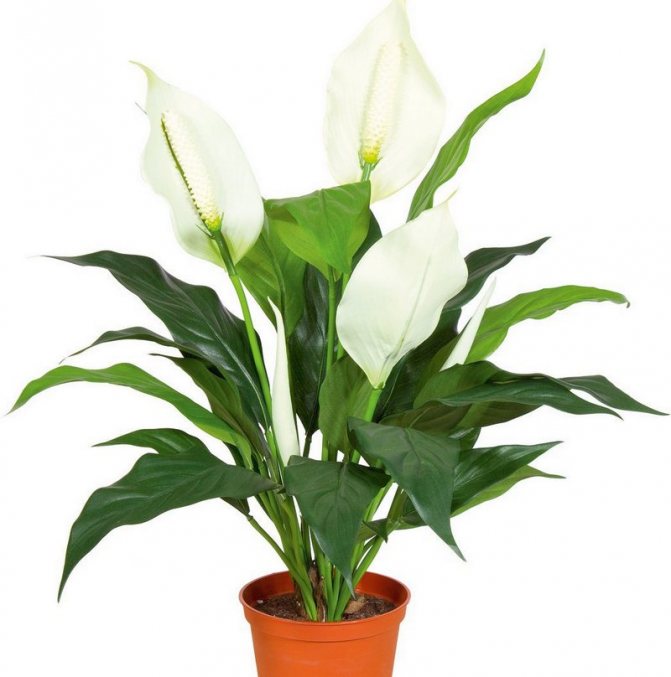

In common parlance, this exotic plant is called "white sail". This is due to the fact that its flowers are similar to a white sail. Spathiphyllum, when provided with comfortable conditions, blooms for a very long time. Some species of this plant have a rich aroma. A white sail is afraid of exposure to direct sunlight; it can exist only in partial shade or in diffused light. In the autumn-winter period, the plant should be watered moderately, during flowering and in the spring-summer period - abundantly, while allowing the topsoil to dry out between waterings. The substrate should not be allowed to dry out, but it should not be too moist. For spathiphyllum, it is necessary to choose the right place, taking into account the fact that it does not tolerate cold well. Therefore, it is necessary to place it as far as possible from drafts and from windows that open in winter to ventilate.
Does the amount of light only matter?
In addition to the intensity of the light flux, the duration of daylight hours most clearly affects the life of plants. In this regard, the following groups of plants are distinguished: long-day, short-day, indifferent. In this case, how does light affect the growth of a houseplant?
A long length in summer is common for flowers in temperate latitudes. It is under such conditions that their wild relatives are actively developing and blooming. Our indoor pets from this group also consider an increase in daylight hours, reaching a length of more than 12-14 hours, as a signal for activating life processes. These include achimenes, bougainvillea, balsam, gloxinia, hibiscus, calceolaria, bells, pelargonium, primrose, centpolia, stephanotis, fuchsia. With an increase in the length of the day, they leave the dormant period, develop rapidly and bloom.
People from low latitudes, where the natural duration of daylight hours does not exceed 12 hours, "wake up" on our windowsills with the onset of autumn, when the day becomes shorter. Most of the house flowers can be included in this group. From lovers of a short day, we will name azaleas, most varieties of begonias, Kalanchoe, poinsettia, tradescantia, chrysanthemum, schlumberger, euphorbia. They are characterized by a flowering period in autumn or winter, and in summer they accumulate vegetative mass, lay flower buds.
Azalea will feel good on the windowsill
For many indoor flowers, the length of daylight hours does not matter. It is much more important for them to have sufficient lighting for a normal life. Examples include abutilone, asparagus, begonias (a number of varieties), roses. Finally, the quality of light and the wavelength of light that reaches the surface of the sheet are also extremely important. Many recommendations for the care of home flowers indicate that they should be protected from direct sunlight. This recommendation applies even to the most light-loving plants.
The reason for this is due to the fact that light from different parts of the spectrum has different meanings for plants.The main energy for photosynthesis is provided by red and orange rays, which have a wavelength of 720 to 590 nm. Such light stimulates the reactions of synthesis of carbohydrates and proteins in plant tissues, activates the accumulation of vegetative mass, and enhances growth processes. Illumination with the long-wavelength part of the spectrum is most important for young developing shoots.
- Ultraviolet rays (not all, but only in the range of 300-380 nm) and rays of the blue part of the spectrum take less part in photosynthesis, but have a strong regulatory force. Under their influence, the body's defenses are enhanced, the cold resistance of plants increases. They are also able to prevent crushing of leaves, excessive stretching of plants.
- The yellow-green part of the light spectrum does not participate in photosynthesis and is not assimilated by the plant.
In diffused light, rays of the short and long parts of the spectrum predominate, therefore, such light will be absorbed by the plant with the greatest benefit. But the light falling almost at a right angle on the surface of the leaf contains much less red-orange and blue-violet rays. Their content here does not exceed 37%. Therefore, the energy of light falling on the sheet at a right angle is involved mainly in heating the sheet surface.
Ivy
This evergreen plant, also known as hedera, is found naturally in shady forests. Ivy has a significant mass of leaves, therefore it is one of the most effective indoor air purifiers. For this plant to form a lush green wall, it must be kept cool. Hedera does not tolerate heat and sunlight. Since ivy is a moisture-loving plant with a superficial root system, it must be watered regularly and fairly abundantly in the spring-summer period. It is impossible to allow the soil to dry out, however, stagnant water in the pot leads to the death of ivy. In winter, it should be watered frequently if it is in a warm room. When wintering in a cool place, watering this plant should be limited to an amount of water that allows the soil to not dry out.
Blooming indoor flowers that love the sun
This group of plants pleases with regular blooming of buds with proper care and lighting.
Anthurium
Belongs to the numerous family of the Aronievs. Such flowers usually have a herbaceous shape, but there are climbing and even tree-like ones. Most of the cultivars are epiphytes, which are native to South America. They need a temperature of about 20-25 ° C, high humidity (80-100%), bright but diffused lighting.
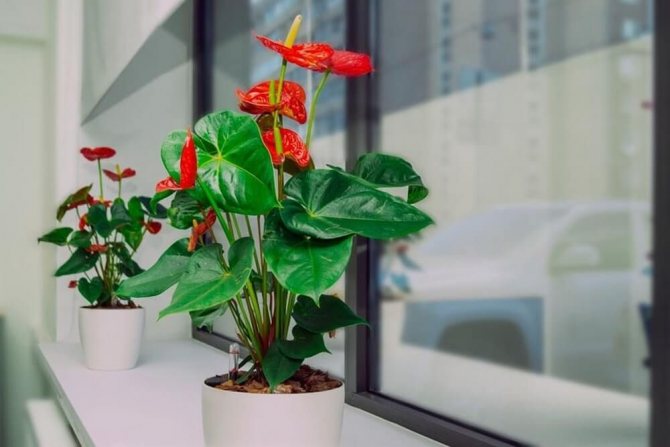

Blooming scarlet anthurium
Most often they grow to a height of 30-50 cm, but there are also larger forms. The leaves are spatulate with round or pointed edges, dissected, but always with a thickening at the end of the petiole (geniculum). The inflorescence has a core in the form of a cob and a veil, painted in white, red, green and other colors.
Hippeastrum
They are part of the Amaryllis family. Translated from Latin, the name means "rider" and "star", often confused with amaryllis, although this is a mistake, the plants are united only by a common family. A perennial bulbous plant blooms from August to September with large bright flowers, similar to lilies in various shades. Corollas last for 10 days.
For your information! After flowering, boxes remain filled with seeds with 100% germination.
The temperature of the content should be 17-25 ° C, watering through the pan, the lighting is bright, but diffused. Southwest and southeast windows are suitable.
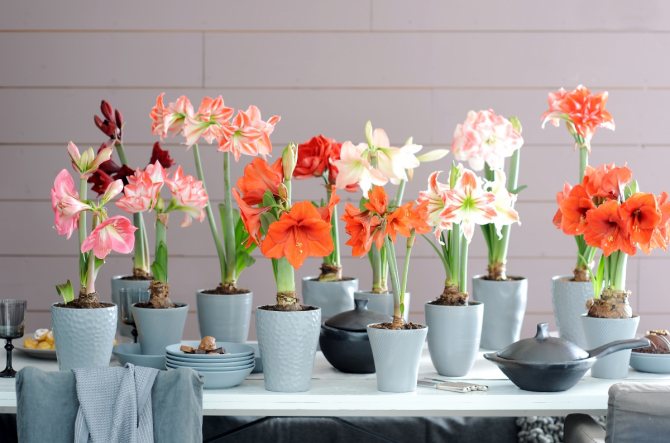

Hippeastrum of different shades
Sinningia
It belongs to the genus Gesnerievye, like gloxinia. It has a nodule root system and large pubescent leaves collected in a rosette. The bell-shaped six-lobed corolla, up to 10 cm in diameter, can be of almost any color, including simple, semi-double and double.The temperature during the active period requires 22-28 ° С, and during rest - about 12-13 ° С. Lighting is required bright and diffused, but direct in the mornings and evenings. An east or west window is ideal.
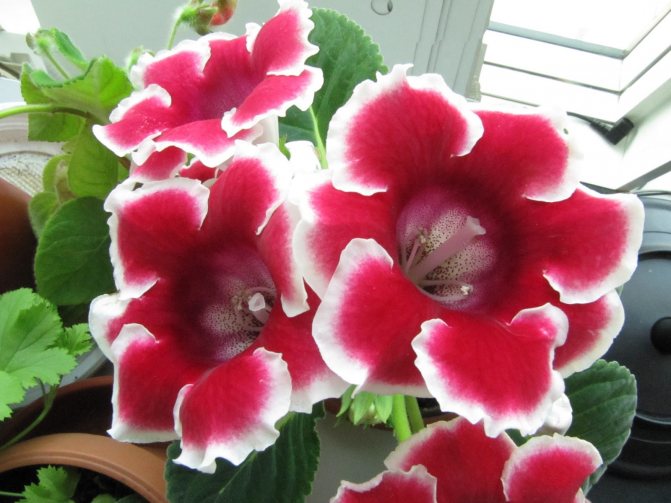

Blooming sinningia
Dendrobiums (Dendrobium)
Perennial orchids grow beautifully in greenhouses and on window sills. Luxurious flowers and a pleasant aroma with unpretentious content are the main advantages of the plant. One pseudobulb can grow stalks bearing up to 70 flowers. Each corolla lasts up to two months. Requires bright diffused lighting for up to 12 hours. West and east windows are best suited. Shading is required from the midday sun.
Dendrobium flower
Fern
Some of the easiest to keep and most widespread ferns include:
- round-leaved pellet;
- citromium;
- nephrolepis;
- davallia;
- nesting bone;
- pteris Cretan.
Ferns need moist air and shade. It needs to be sprayed frequently, especially during the heating season. Care must be taken to keep the soil in the pot with this plant constantly moist.
From a place to the garden: TOP-10 shade-loving plants
The leaders of shade-loving flowers for the garden include:
- Chiastofillum opposite-leaved... It features a long and creeping rhizome. The flower itself is small in size, spreads over the surface of the earth. Terminal inflorescences are racemose-paniculate yellow. Refers to perennial. Stony alkaline soil is suitable for cultivation. Reproduction is carried out in several ways: by seeds, dividing the bush, cuttings.
- Goose onions yellow... Low plant, bulbous. The flowers are yellow in color. It blooms in early spring, it is preferable to plant it on moderately moist soil. Propagated by bulbs, seeds.
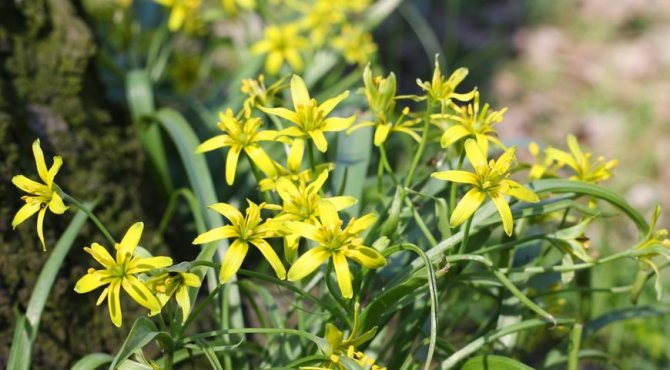

- Aquilegia... Refers to perennial. The foliage is openwork, the flowers are of different colors. This flower is unpretentious to the soil, loves moisture, but not waterlogging. With proper care and selection of fertilizers, it will delight with abundant flowering. Top dressing should be done once a month. Propagated by bushes, seeds.


- Garden geranium... It grows rapidly, belongs to the perennial. Not afraid of drought and frost. These flowers love shade, are considered resistant to diseases and pests. Regular feeding and watering is required, but moderate. In early spring, it is recommended to apply nitrogen fertilizers, and throughout the growing season, once a month, you need to carry out a complex feeding.


- Lupine multifoliate... Refers to perennials. It has a powerful bush, up to 120 cm high. Flowers of various colors. Loves well-moisturized soil. Reproduction is carried out by seeds.
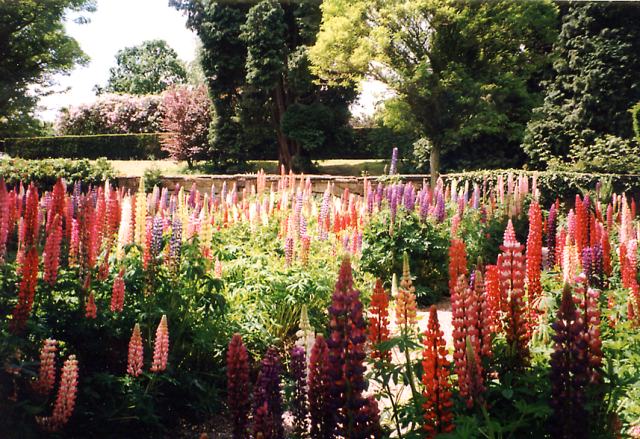

- Lipstick... Moisture-loving and perennial plant, low - no more than 30 cm. Peaty soils with moderate moisture are suitable for cultivation. Propagated by seeds, by dividing the bush.
- Dicenter... Perennial shade-loving flower for the garden, loves moisture. Fertilization is recommended in the spring. For this flower, waterlogging is destructive, rhizome rot may occur. In severe frosts, it freezes, so you need to cover for the winter. Reproduction by bushes or cuttings.
- Hydrangea... Prefers acidic, nutritious and well-moisturized soil. Mulching is mandatory. Resistant to diseases and pests. Winter hardy.


- Hosta... Unpretentious plant, resistant to frost and drought. You need to divide the bush no more than once every five years. Sizes and heights can be varied.


- Astilba... Refers to shade-loving garden flowers that love moisture, unpretentious, blooms beautifully. Grows well in fertile and moist soil. Mulching is recommended. Every five years, it is necessary to divide the bush.
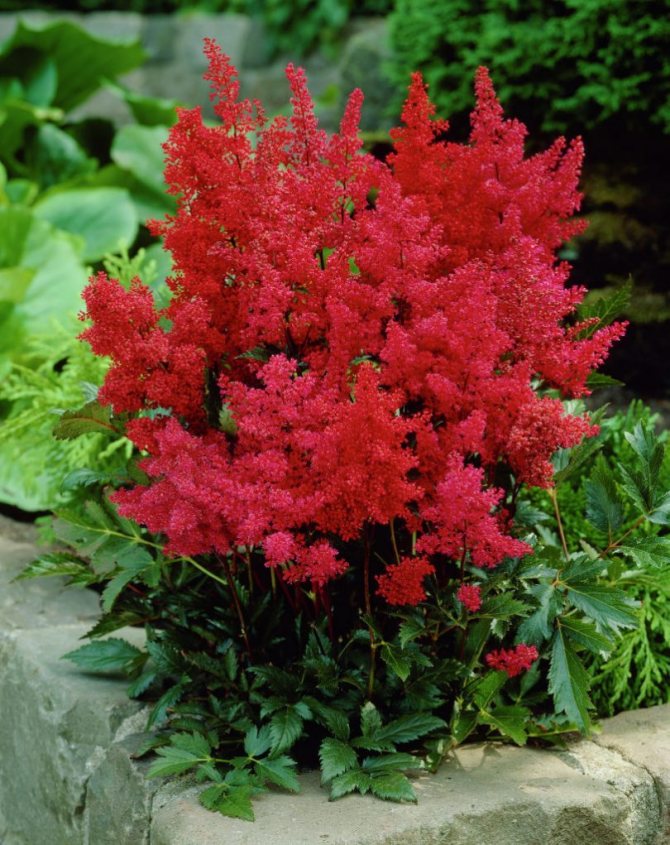

Gardenia
Among the flowering shade-loving plants, the jasmine gardenia is one of the least moody. It should be sprayed frequently.Gardenia thrives in shaded areas, however, you need to choose a place for it in advance, and then do not move it. If you move it even a short distance, this will lead to the fall of not only flowers, but also leaves. Drying out of the earthen coma is completely unacceptable. The soil should remain slightly moist at all times. When it must pass a sufficient amount of air to the root system. Therefore, it is recommended to use light soil for growing this plant.
Spring palette
Shade-loving primroses are capable of reviving a dull picture in early spring. The screech and snowdrop are the very first bright colors of nature after awakening. Shade-loving crops came to the garden from the forest, so the lack of light is not terrible for them. Shade-tolerant plants that will decorate the site with flowering in spring include:
- muscari;
- daffodils;
- pushkinia;
- erythronium;
- frost-resistant varieties of kandyk;
- liverwort and dicenter.
Aglaonema
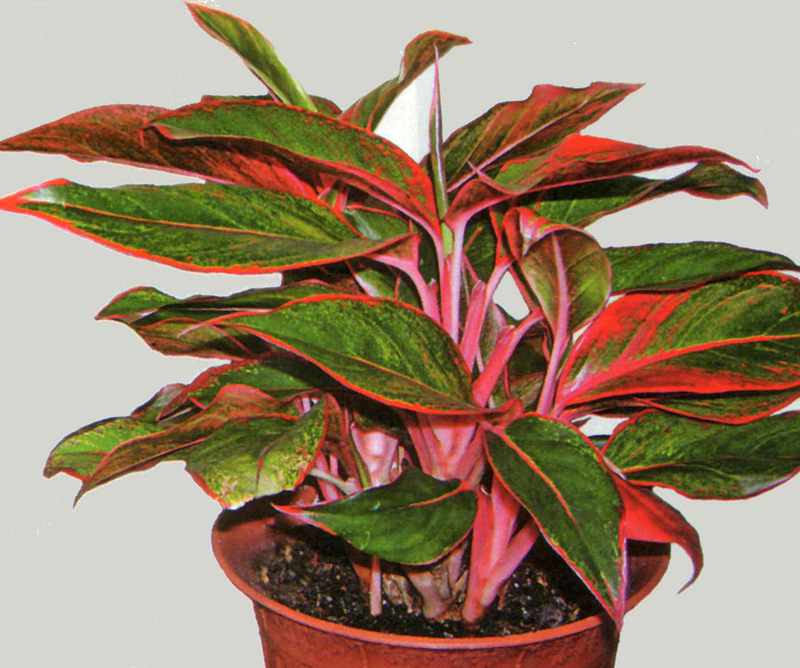

This decorative shade-loving plant stands out for the beauty of its unusual oblong leaves. It loves warm and humid air. Aglaonema cannot stand direct sunlight. Under their influence, its leaves get burned. It is best to keep it in the shade, but not in complete darkness. If this plant stays in a dark place for a long time, it will lose its color and its variegated leaves will turn green. The aglaonema should not be placed near heating appliances or in a draft. Although this plant is capable of killing streptococcal infections and purifying benzene from the air, it can cause severe skin irritation if handled improperly. This is due to the content of toxic enzymes, proteins and oxalic acid in aglaonema. The release of its juice can make breathing difficult, cause swelling of the mucous membranes. In some cases, this plant leads to allergic reactions. When performing any work with it, you should wear protective gloves, and after they are finished, wash your hands thoroughly with soap and water. It is for this reason that aglaonema is not very popular with shade-loving plants. It should be kept away from children and animals.
Position to light source
Many plants are very sensitive to changes in position in relation to the light source (especially zygocactus, geranium, fuchsia). Therefore, after the plant has been assigned a permanent place in the room, permutations should be avoided.
Flowers and grasses are drawn to the light and turn their leaves towards it, as a result in the rooms they take a one-sided shape. Evergreen ornamental deciduous plants, if gradually turned towards the light, grow evenly in all directions.
Most plants need sunlight for planting flower buds, flowering and ripening fruits, but there are some that need darkness.
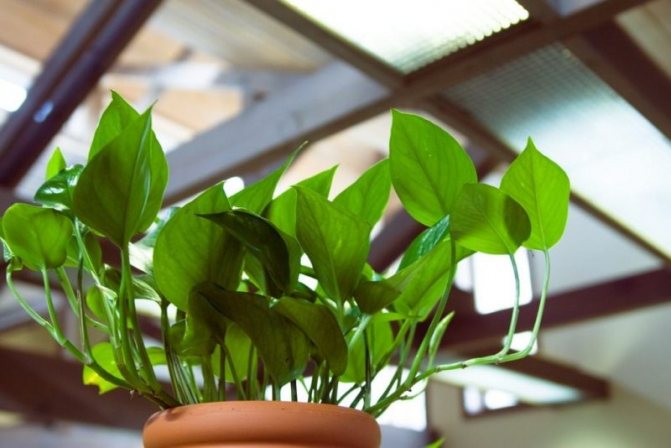

Shade-loving plants should be placed away from the window.
According to the degree of attitude to the light regime, plants of a long day are distinguished, which can grow, bloom, and bear fruit all year round, they do not need darkness at all. In mid-latitudes (hydrangea, gloxinia, saintpaulia, calceolaria, cineraria, etc.) they bloom from early spring, (i.e., with the onset of a long day and a short night), until the beginning of autumn.
Short-day plants (zygocactus, Kalanchoe, etc.) need 8-10 hour daylight hours to bloom.
Plants that are not demanding on the length of the day bloom both with long and short daylight hours (roses, begonia semperflorence, indoor maple, etc.)
Plants of alternating long and short days bloom only after short winter days are replaced by long spring days (large-flowered pelargonium) or require reverse alternation, i.e. bloom only in winter (camellia, cyclamen).
Sometimes, when decorating an interior, the rules of aesthetics require a certain placement of plants, which does not at all correspond to the requirements for lighting.In these cases, plant species are selected that can withstand the absence of light for a longer time, or after some time some plants are replaced by others.
In winter, you need to be especially careful with the placement of plants. In warm rooms, a temperature of 20-30 ℃ contributes to their rapid growth, and the lack of light prevents this. Thus, the balance is disturbed, as a result of which the plants often die. Therefore, in winter, all plants, even shade-tolerant ones, should be placed in the brightest places.


In the spring, more and more light comes in every day, but direct sunlight can burn the plant, so you need to shade them slightly (I shade them with tracing paper glued to the window; there is light, but not bright). Many light-loving plants can be kept on the balcony all summer long. They should get used to the abundance of sunlight gradually: you cannot immediately put a houseplant on a balcony in the sun - it will get a sunburn!
Philodendron climbing
This creeping vine has become widespread as an indoor crop. She is unassuming to care for, but needs special conditions. First, the philodendron requires a suitable indoor temperature in the range of eighteen to twenty-eight degrees. Secondly, for its maintenance, you should take care of the soil, which must constantly remain sufficiently moist. Thirdly, you need to find a suitable place for it. It is best to keep it away from the window, in the corner of the room, where the minimum amount of direct sunlight penetrates. Fourthly, the most important condition for maintaining a philodendron is the absence of drafts.
Location of windows and amount of light
Indoors, plants receive one-way light from windows. Even on one window, the lighting conditions are not the same. The right side of the west-facing window receives more light than the left.
On the hanging shelf near the upper transom, the lighting is only lateral, and on the windowsill, it is partly overhead.
The amount of direct sunlight entering the room depends on the location of the windows. Most of the sun's rays penetrate into the so-called "lanterns" with three-sided lighting, then into the corner rooms with windows to the east and south or west.
The sun is longest in the south (open to the sun for 6-9 hours and let in maximum sunlight), then on the southeast and southwestern windows; the windows facing east are illuminated by the sun from morning to noon, the western ones only in the afternoon.
The north-facing windows let in an even, almost constant light intensity throughout the day.


In the conditions of our geographic latitude, most of the day the plants are illuminated not by direct, but by diffused sunlight.
The amount of scattered sunlight entering the room is determined by the size of the part of the sky visible through the window (or windows). If the windows face large open spaces (embankments, wide streets, etc.), then much more light gets into such rooms than those through whose windows only the walls of neighboring houses are visible. Some of the sunlight, especially if the room has dark wallpaper and furniture, is absorbed.
In bright rooms with windows facing south, east or west, you can successfully grow any indoor plants.
Features of growing, choosing a place for heliophyte
All plants need three things in order to continue their vital activity - the supply of light, water and heat, but to a greater or lesser extent.
Typical examples of light-loving plants can be given without even having special knowledge - each of them has certain species characteristics:
- small leaves with a rough texturehelping to evaporate less moisture received;
- hairs or waxy coating, which are provided by nature for the same purposes - water conservation and protection of cells from intense ultraviolet radiation;
- basal metabolism and carotenoids - these are not the signs that help the amateur gardener to distinguish heliophyte from scyophyte, but the ones listed earlier are quite enough to distinguish them by their ability to adapt.
There are several criteria for the appearance of a light-loving plant that cannot be guided by when buying seeds. It is difficult to distinguish the facultative heliophyte from the more adapted to the sun, and this must be done even before planting in the ground in order to reasonably distribute the plants according to the degree of illumination.
Therefore, in your free time from gardening and gardening, it is better to study the available information, look for them on special sites and draw up a plan for the approximate location of plantings even before purchasing seeds, sowing for seedlings and planting in open ground. The main differences between heliophytes and scyophytes are listed here:
Touchy
The list of shade-loving plants that bloom all summer would not be complete without touch-ups. Touch-me-not is an annual plant, so you will have to sow it every spring. But your troubles will pay off with a beautiful bright color. Touch-me-not is a delicate plant, so do not sow it too early, wait until the soil warms up enough. Touch-me-not loves moisture and nutrient-rich soils. If the touch-me-not starts to stretch too far in height, it can be trimmed by about a third, and then added with liquid fertilizer. Impatient flowers can be of a wide variety of colors and shades, ranging from pastel to very bright.
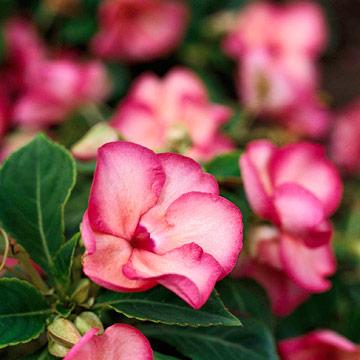

Just because your garden doesn't have enough sunshine doesn't mean you won't be able to enjoy blooming plants throughout the summer. Just pick a few plants from our list and enjoy the vibrant colors.
Deciduous light-loving plants
Coleus
This is just a luxurious indoor flower that comes from Asia. Its leaves are simply incredible variegated color, but they acquire their color exclusively in the sun, in a dark place they will turn pale. Coloring can be very diverse, so this flower looks most interesting in a composition of plants of different colors.
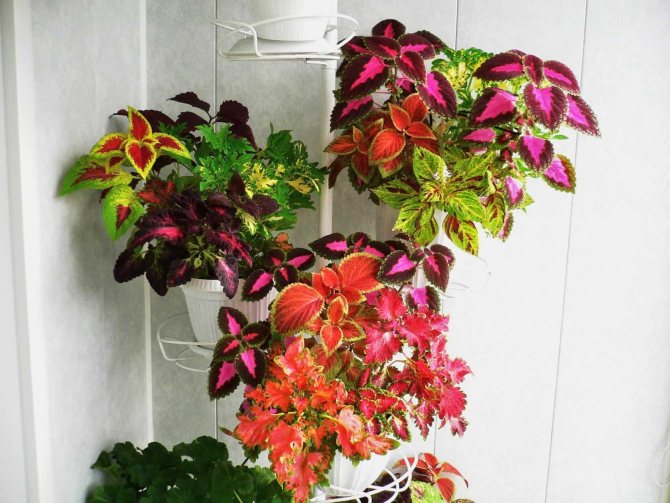

Caring for Coleus is simple, its main requirements are the presence of heat and light. Only under such conditions will the plant be truly decorative. In addition, caring for Coleus includes:
- the presence of not just good lighting, but direct sunlight. The more light, the brighter the coleus leaves;
- the temperature in the room where the flower stands should not fall below 20 - 22 degrees;
- the flower is very fond of moisture, so it should be sprayed with water at room temperature as often as possible;
- the plant requires abundant watering, but it does not need to be poured into the roots. In winter, when the flower is dormant, watering should be reduced. However, if you transfer a flower to a dark room, it will lose all its decorative properties;
- the plant reproduces well by shoots, so root the tops of your coleus when doing decorative pruning.
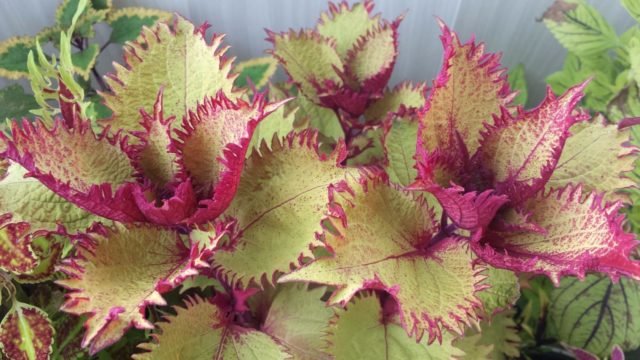

Like many light-loving plants, Coleus grows well in summer outdoors.
Pedilanthus (Molochaev family)
This is a shrub with variegated leaves that is very fond of sunlight. At home, it does not grow very large, although in nature its stems reach a fairly large length. His homeland is Latin America.
Its shoots branch slightly and require obligatory formative pruning, otherwise the bush will quickly lose its decorative effect.
Pedilanthus grows under certain conditions:
- despite his love of sunlight, he does not like direct rays, so the plant must either be shaded or placed on the east or west windows;
- you need to water the pedilanthus moderately, it does not tolerate the bay, as well as too wet soil.The water should settle, while it is better to slightly dry the plant than to water it too much. In winter, watering should be almost stopped;
- this plant does not require too humid air, it is enough just to periodically wipe its leaves with a damp cloth, since dust quickly settles on them;
- You can feed the pedilanthus with fertilizer for cacti, by the way, and the soil for succulents is also great for this plant.
.


Tips for caring for dark-loving flowers
Care recommendations exist for each flower. However, they have common features that make it possible to give universal advice:
- most heliophobes like high humidity. They need frequent watering and regular spraying;
- plants located on the east and west windows should be shaded on hot days, because they can get burned. South windows are contraindicated for them;
- the soil for lovers of shade should be chosen nutritious and of high quality. Without access to sunlight, heliophobes are accustomed to receiving nutrients from the earth;
- the leaves of indoor flowers should be regularly wiped from dust;
- blooming shade-loving plants should not be rearranged. This will cause the buds to shed.
Flowers-heliophobes are very unpretentious. Some surprise with their vitality. They react violently even to the manifestation of minimal attention: they grow, please with their appearance and even bloom. There is something to love about them.
5 / 5 ( 1 vote)
What kind of home flowers to give preference to
Indoor plants can be classified according to various criteria: features of reproduction and flowering, life expectancy, flowering time, type of stem and rhizome.
It is generally accepted to distinguish 8 main types of indoor flowers:
- Beautifully flowering plants delight the eye with magnificent inflorescences. These are azalea, anthurium, begonia, gerbera, rose, pelargonium, phalaenopsis, cyclamen, etc. They differ in flowering time (from a week to several months), life period (one year or more). They require special care, while pleasing with regular flowering.
- Decorative deciduous specimens are the largest group, differing in the structure, shape of leaves, bushes, and their various colors. Distinguish between bushy and tree-like creatures with oval, linear, dissected, serrated leaves, as well as hanging stems. This group includes ardisia, dieffenbachia, cypress, ficus, boxwood, myrtle, shefflera, ivy, tradescantia, etc.
- Bromeliad plants are distinguished by tough, thorny leaves that form a rosette, in the center of which small flowers are often formed. The beauty of this species lies in the leaves that are located around the inflorescences and have different colors. This includes bilbergia, gusmania, cryptantus, ehmeya.
- Cacti and succulents are a group of unpretentious specimens. They differ in compactness, fleshy, juicy stems. Cacti are covered with thorns with a light down. The species are represented by aloe, Kalanchoe, fat woman, hoya, sansevieria, etc.
- Ferns are the owners of spreading light green graceful leaves. They reproduce by spores, division and buds, are not capable of flowering. They prefer partial shade, do not ask for careful care. Aadianum, nephrolepis, polypodium and other species belong to this species.
- Bulbous plants are flowers with an underground bulb-shaped stem that collects nutrients necessary for nutrition. Does not tolerate damage, waterlogging. They are distinguished by beautiful flowering, great for creating compositions. These include hippeastrum, hyacinth, lily, euharius, etc.
- Palm trees are inhabitants of the tropics, perfectly accustomed to our climatic conditions. They have endurance, love light, can grow over 2 meters. Coconut, date palms, rapis, chamedorea are well placed in spacious rooms.
- Fruit and berry plants now grow well at home. For fruiting, they need a lot of lighting, regular fertilization, and warm air.These are avocado, lemon, coffee tree, tangerine.
True flower lovers prefer to have at least one representative of each group in their home greenhouse. When choosing a houseplant, you need to take into account all the characteristics: appearance, size, color scheme, and most importantly, the conditions of detention.
Unpretentious medicinal plants
Lovers of traditional medicine can grow medicinal plants at home that do not require labor-intensive care.
Did you like the article? Show it to your friends:
Agree, nothing decorates the interior of your home like bright flowers in pretty pots. These indoor plants not only delight the eye with a riot of colors, but also benefit by absorbing harmful substances from synthetic furniture upholstery, carpets, curtains and other details of your interior.
Some houseplants have medicinal properties and have been indispensable in many families. But sometimes caring for indoor plants is time-consuming, requires certain knowledge and not everyone can cope with it.
If you are a beginner florist, often travel, or housework takes a lot of time, we offer you a selection of the most unpretentious indoor plants that do not require special care conditions, but can decorate your home no worse than expensive and exotic ones.
Scarlet or agave
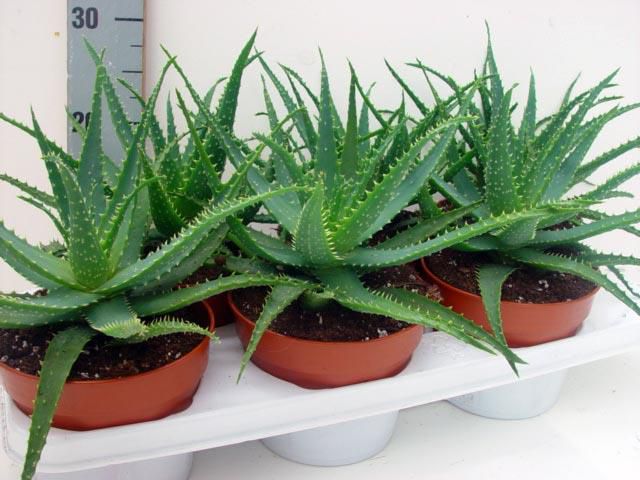

Perhaps the most popular houseplant of our mothers and grandmothers, primarily due to its medicinal properties. Everyone knows its ability to cope with purulent wounds, to heal cuts and burns. And aloe juice perfectly helps with a cold. All species of this plant are typical succulents, great lovers of sunlight. They do not like frequent watering and are great for those who have to spend most of their time outside the house. A place in the house for them is chosen sunny, on the windowsill or on sunny verandas, and in summer the scarlet can be taken out into the open air. Do not try to create artificial lighting for them with fluorescent lamps in winter. This leads to stretching of the plant and loss of appearance. It is best to keep it in a cool, bright place and water it once a month. Abundant watering can cause rotting of the plant roots. In summer, scarlet is watered only after the top layer of soil in the pot has dried.
Chlorophytum
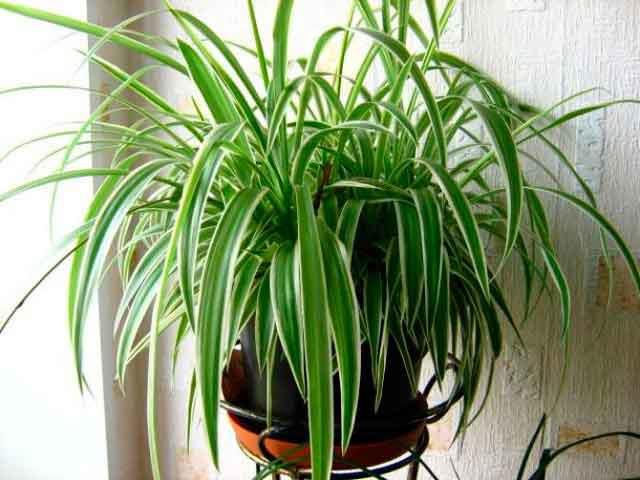

This is a rather unpretentious indoor plant, which is not difficult to grow even for novice indoor floriculture lovers. Chlorophytum can be attributed to both sun-loving and shade-tolerant plants. It feels best in a light or slightly darkened place. The bright color of variegated forms is slightly lost in the shade. This plant can easily tolerate direct sunlight for several hours. Chlorophytum is best placed in the kitchen, as it easily cleans the room of harmful gases.
Dracaena
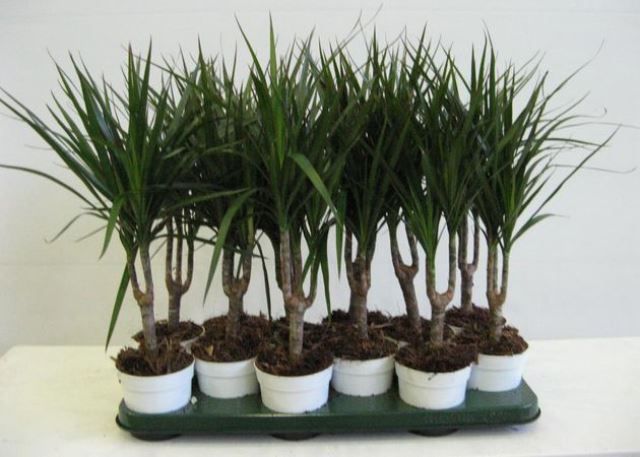

There are several types of this houseplant. Two of them are very easy to clean. These are dracaena bordered and dracaena draca. They can withstand shade and do not require frequent watering or spraying. In modern homes and offices, dracaena serve as a decorative ornament due to their exotic appearance.
Sansevieria
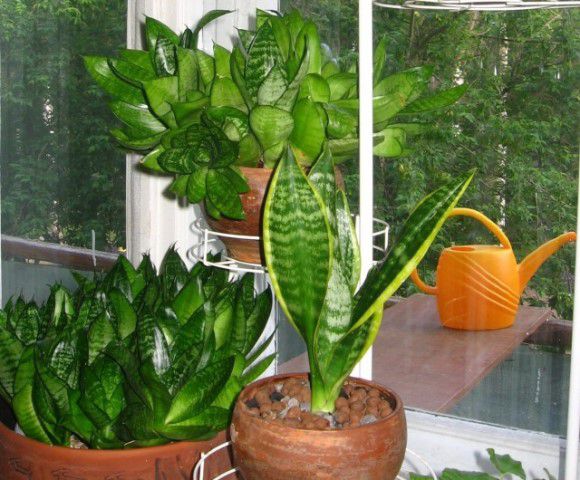

If you can't manage to grow an orchid or orange tree, and all your attempts end in complete failure - do not be discouraged! Start with sansevieria. This very beautiful houseplant of the Agavov family can well be attributed to the number of "indestructible". It tolerates shade and sun, dry air, humidity and coolness. It also protects against the accumulation of harmful substances emitted by linoleum and synthetics. In the bright sun, sansevieria can even bloom, but it does not tolerate waterlogging of the soil and low temperatures. It is not necessary to replant it, but when it takes too many roots, the pot itself may crack. It is better to purchase two flowers at once, because in itself this is a very beautiful and undoubtedly useful plant.
Fat woman
If you want prosperity and abundance to come to your home, and good luck accompanies all your endeavors, get a house plant called the bastard, popularly known as a money tree. It does not bloom, but it grows to a huge size, has very beautiful leaves of a juicy green hue, does not require special care, but does not like waterlogging and dark corners. Will decorate the interior of any home or office.
Abutilon (indoor maple)
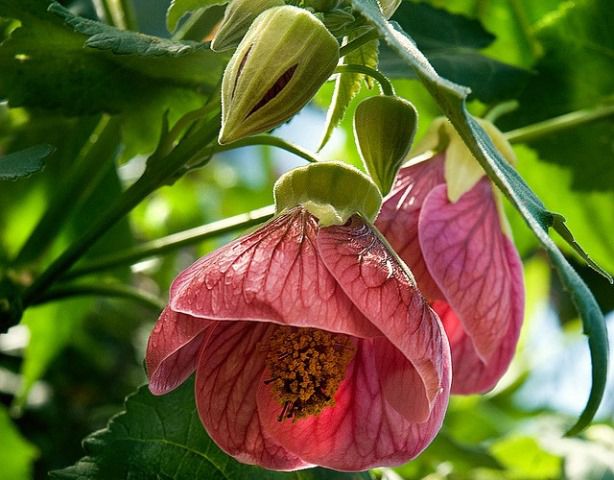

Another unpretentious, but very effective houseplant. Its large flowers are bell-shaped and come in various colors: white, pink, yellow, red, and the leaves are similar to maple. Hence the name. Abutilon tolerates dryness and heat in an apartment, and a pot with this plant can be placed on the windowsill or at some distance from it. You need to water them a little - otherwise they will not bloom. The plant does not require special feeding: you just need to enrich the soil with liquid fertilizer for indoor plants once every three weeks. Abutilon not only creates a pleasant atmosphere in the house, but also perfectly moisturizes the air.
Hibiscus
The second name of this plant is the Chinese rose. It is a bush with huge and very beautiful flower-bowls. Different varieties of this plant have different color of flowers. Most often, these are red flowers, but there are also white and pink ones, and even speckled. Hibiscus blooms all year round, which means that in winter you will have a little summer in your apartment. This flower loves light and needs to be kept on the windowsill. It also needs to be watered and fed regularly in winter. But the beauty is worth it.
Japanese fatsia
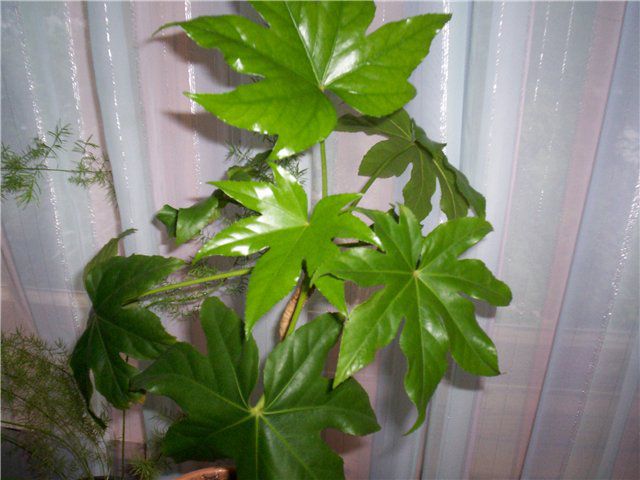

If there is not a lot of light in your house, and you think that the conditions for indoor plants are completely inappropriate, feel free to plant Japanese fatsia. It is a shade-tolerant and disease-resistant plant with very large and beautiful chestnut-like leaves. It feels great even near the central heating battery and at the same time it humidifies the air in the room well, promotes healthy sleep.
"Living stones"


These are very unusual indoor plants. In appearance, they resemble pebbles, and are accustomed to the Spartan conditions of detention: they grow on stones, and in winter they do not require watering at all. Very different in shape and color, these "living stones" will be an excellent decoration for your room, and in the spring they will delight you with unusual flowers.
Geranium
Geranium attracts attention with its bright flowering, which can also be safely attributed to unpretentious houseplants. Geranium is rightfully considered a symbol of home comfort, and was brought to Europe in the middle of the 17th century. Nowadays, numerous varieties of a flower amaze the imagination with a variety of colors and shapes. And if you don't have enough time to take more careful care of it, geranium will still bloom, but not so abundantly.
What is characteristic of heliophytes
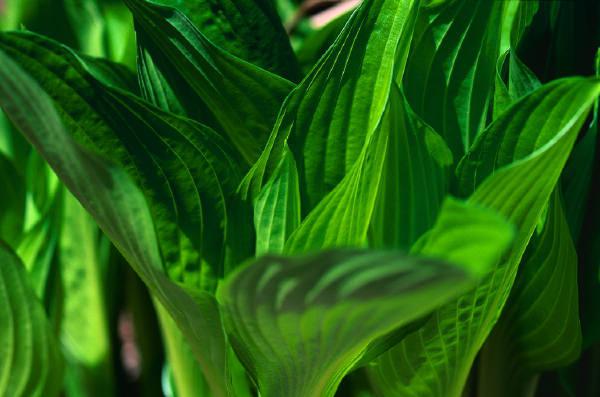

The leaves of light-loving plants have their own characteristics and are easy to spot. Namely:
- the thickness of the leaves of such plants is most often greater than that of others, not so sensitive to light;
- the angle between the leaves and the direction of incidence of the sun's rays is large, reaching ninety degrees.
Also, light-loving plants (for example, birch, and in hotter latitudes - cactus) contain a huge number of chloroplasts in their leaves: there can be from fifty to three hundred pieces of them per cell, due to which there is a high intensity of photosynthesis. This is the most characteristic physiological feature of plants with high requirements for the sun. This is not the end of the characteristics of light-loving plants, we will consider a few more questions.
Planting and soil for cacti
As a soil, you can take either land from the garden, or purchase any purchased soil in the store. But to increase the looseness, you need to add coarse sand (perlite or something like that), and if it is garden soil, then add peat as well.
It is better to refrain from using any fertilizers - cacti will do without them.
They should be planted in slightly damp soil, shorten the fibrous roots by a third, dry the sections and do not water after planting for at least a week.
Light-loving decorative foliage plants for the home
These plants are prized for the beauty of their leaves. Their leaf blades, depending on the type, attract attention with an unusual shape or color. All light-loving decorative leafy plants should be kept in good lighting, since otherwise their shoots will stretch out, and the leaves will lose their decorative color. Let us consider in more detail the light-loving decorative leafy indoor plants with their names and photos.
Alocasia
A tropical light-loving plant that requires high humidity and bright lighting. It has a thick rhizome and a modified short stem. Alocasia leaves are arranged on long petioles. The leaf blades are sagittal, with pronounced light veins. The plant reaches a height of 60-70 cm.


Decorative leaf begonia
Deciduous begonias are distinguished by very bright and unusual leaves, as well as inconspicuous flowering. These are very unpretentious indoor plants that need bright light for proper growth.
Usually these are ground cover varieties with a fairly short and branching stem. Leaves are petiolate, of various shapes and colors. With a lack of lighting, they can lose their color and stretch.
Dracaena
Dracaena is an ornamental light-loving plant, shaped like a palm tree. Its leaves are narrow and long, pointed at the ends. They are mainly concentrated at the ends of straight and powerful shoots.
A plant on its own in a room culture usually does not branch, side shoots can be obtained as a result of pruning the plant. Requires bright lighting, otherwise the shoots grow weak and thin, the leaves dry quickly, and the trunk is bare.
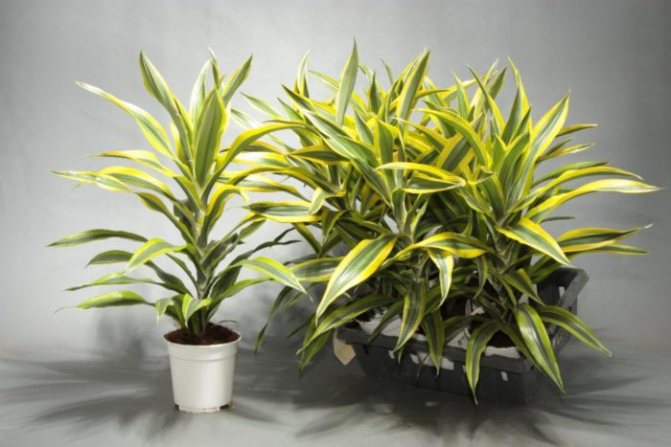

Calathea
A very beautiful and light-loving indoor plant in the shape of a bush. Its trunk is greatly shortened, the leaves grow on long petioles. The leaf blades of the calathea have an oblong shape and a very unusual color. The surface of the leaf is covered with a complex variegated pattern of various shades of green. The leaves resemble bird feathers. Calathea is a capricious plant that can only be grown by experienced flower growers.
Croton
An evergreen shrub that is very popular in indoor culture. It has a straight and branching trunk. Shoots are powerful and straight, covered with leathery leaves of bright color. Croton leaf shape is unique.
It can be from solid to strongly dissected. The color of the leaves is also very varied. They can be painted green, yellow, red, orange and burgundy. When growing croton, special attention should be paid to lighting. Its deficiency inevitably leads to a loss of color and decorative form of the plant.
Monstera
Large houseplant, powerful liana. Its thick shoots reach a length of 1.5 m or more. The leaves are very large and strongly dissected, up to 1 m in diameter. They are attached to the shoot on long stalks. Forms numerous aerial roots for support. In insufficient light, the shoots of the monstera stretch out, and the leaves lose their dissection and become whole.
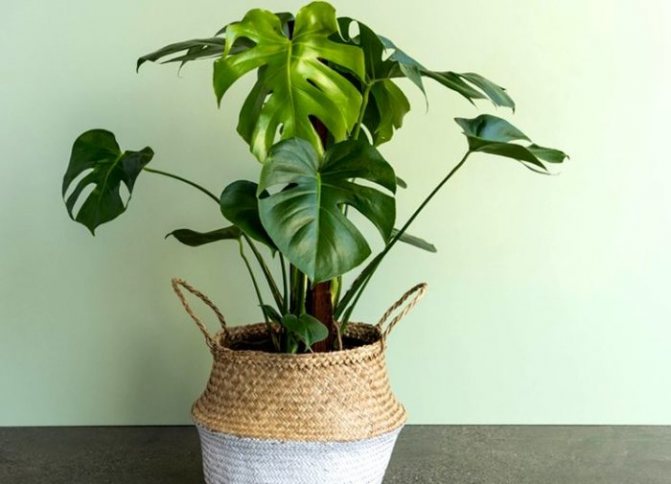

Syngonium
Syngonium is a perennial vine widely used for landscaping premises. Its shoots can be several meters long. It is also possible to give the syngonium a bushy shape. The leaves of the plant are arrow-shaped or heart-shaped. In length they reach 20 cm. There are many varieties of this species with leaves of a wide variety of colors: white, light green, bright green, pink, reddish.
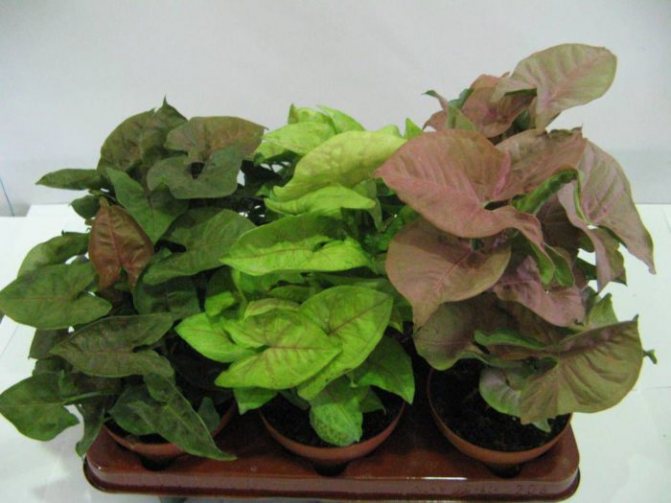

What is shadow


This uncomplicated childish question is not so simple when it comes to floriculture. After all, the concepts of "shadow", "penumbra" are very relative, subjective.For example, the sill of the northern window for a plant will already be a shadow; light-loving specimens will not grow here. If you go further, into the depths of the room, then at a distance of a meter, or three meters from the window, the light flux will differ 10 times, although the human eye practically does not catch this difference.
There is a simple and time-tested trick developed by flower growers. If you, with good eyesight, are able to read a newspaper text in this place at noon, then shade-tolerant copies can be placed here. If the newspaper is difficult to read, the place is too dark even for hardy plants. Yes, you can keep a flower pot here, but additional lighting will be required, especially in the autumn-winter time. And this is a completely different topic of conversation.
Unpretentious orchids
Florists, even experienced ones, are afraid of orchids, because their cultivation requires a lot of attention - as the owners say, you will have to inspect the condition of the flower every day in order to eliminate problems in time. However, upon careful consideration of the features of care, the following simple rules are distinguished:
This ends the care of the plant. In order not to aggravate the situation, it is recommended to use the most unpretentious varieties of orchids for planting - Oncidium, Dendrobium, Wanda, Cattleya.
These shrubs and trees can be planted in the shade
Shade-loving trees and shrubs include:
- Derain white... Unpretentious bush. Possesses decorative red shoots. Even in the shade, it does not lose its variegated color. Watering should be moderate.
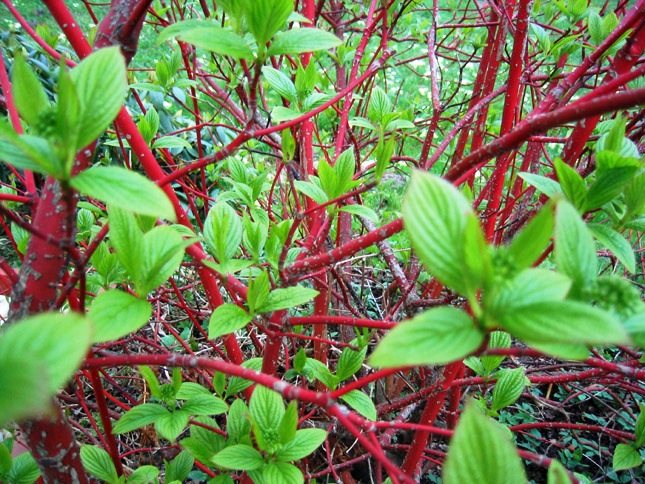

- Hawthorn... Can be used as a hedge. Loves moderate watering, but not drought. Differs in increased endurance.
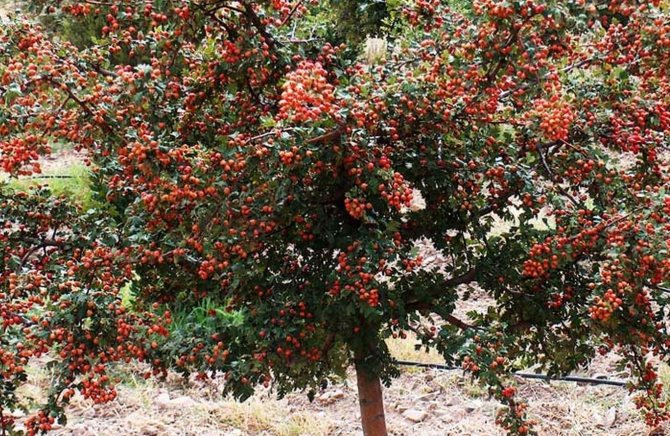

- Viburnum... Useful shrub. Loves shade, abundant watering.
- Tatar honeysuckle... Unpretentious shrub. During flowering, a pleasant aroma spreads over the area.
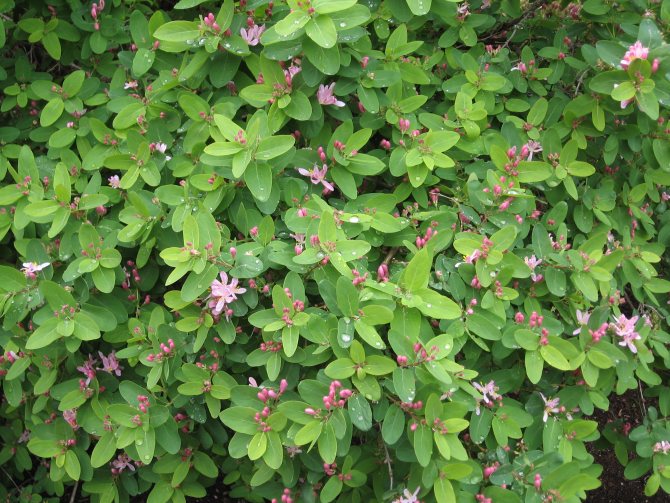

- Norway spruce.
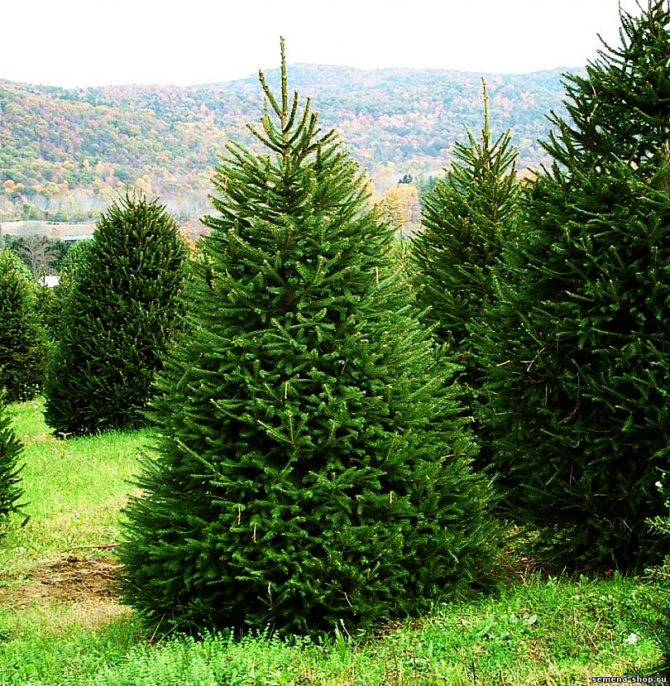

- Fir.


- Canadian hemlock.


- Microbiota.
- Vines... Climbing plants. They love shade and moisture. Can be used to form hedges.
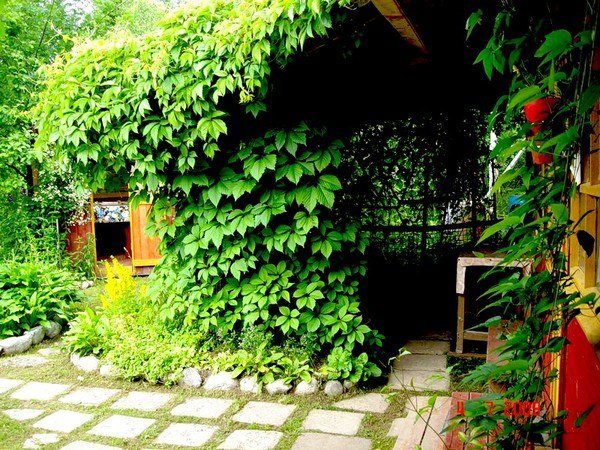

- Bubble-leaf Vine-leaved... Differs in large leaves, beautiful flowers. Refers to unpretentious plants.
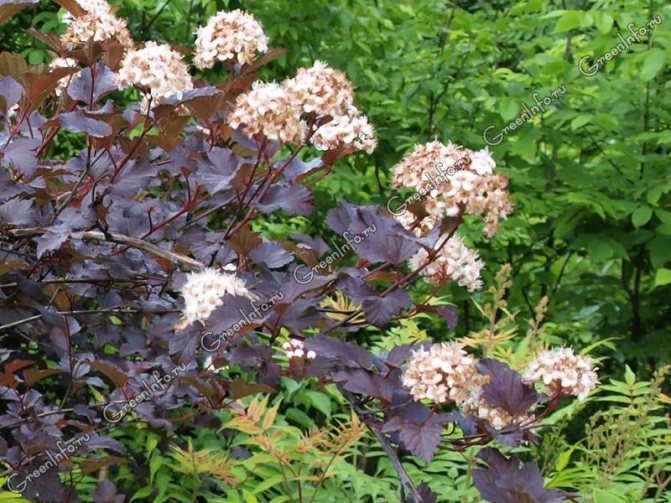

What kind of plants are they, what are they special
Heliophytes (in other sources - light or light-loving plants) strongly depend on the conditions in which they were destined to find themselves.
In nature, they grow in an open area, constantly illuminated by bright sunlight, therefore, their natural adaptation mechanisms are designed for such ecological features of their permanent habitat. The possibilities of adapting to the lack of the necessary source of illumination may differ for them, but very conditionally, and only for the subspecies being divided.
Heliophytes, inhabitants of constantly and brightly lit areas. Shade-tolerant or facultative heliophytes can adapt to both small shade and intense sun, their complete opposite - sciophytes - on the contrary, adapted to survival in the lower tiers of forests, caves in deep-sea space. We can assume that they and heliophytes are two antipodes. If one representative of the flora dies in the light or in the sun, then the light-loving one cannot exist in the shade, in the lower tier or in the depths of the water column.
Which ones are suitable for keeping in a dark room?
Even for a dark room facing north, you can find plants that will feel good.
Here is a list of indoor flowers that will be happy with this arrangement:
- violets. A good option for "northern" cuisine. They are placed on the windowsill, on tables, and on pedestals;
- streptocarpus. Looks perfect on the windowsills of dark living rooms or children's rooms;
- spathiphyllum. They feel good even in the back of the bedroom, the windows of which are closed with blackout curtains for most of the day;
- orchid. Will thank you with luxurious flowers for a place on the windowsill of the northern window of any room;
- chlorophytum.Will survive even in rooms completely devoid of windows;
- sansevieria. It will decorate any room, placing itself at least at the window, at least at the wall opposite from it;
- ivy. A classic option for a stylish yet shaded kitchen;
- ficus. A plant for a large living room. It is desirable to place it near the window.
Important! Psychologists say that dark rooms are much more in need of landscaping. This will help rid the space of gloom and dullness, adding vibrant colors and naturalness. That will affect the mood and well-being of its inhabitants.
A dark room is not a reason to give up flowers. Some specimens feel as comfortable in such rooms as in their native jungle or on the top of a mountain.
Ficuses
Speaking about light-loving indoor plants, one cannot at least briefly dwell on ficuses, especially on our favorite - Benjamin ficus with small bright leaves. However, all ficuses have a powerful root system and beautiful elastic leaves.


Ficus Benjamin is preferred to grow in apartments, since it is easy to form as a bush and it is appropriate even in relatively small rooms.
All ficuses love the sun, because they are home to hot countries, where they grow like trees, reaching large sizes. In addition, they need abundant, although not very frequent watering and a sufficiently high temperature.


Unpretentious indoor flowers blooming all year round
If we consider beautiful, unpretentious indoor flowers, they can be counted from several dozen, the most simple ones in independent cultivation have already been described above (hibiscus, geranium and abutilon).
Now we should list the same easy-to-care flowers that bloom throughout the year, to one degree or another. It should be noted that feeding the plant gives a better and more numerous flowering.
1. Anthurium. The anthurium flower has a second name - male happiness, which is due to the belief to improve male strength. Despite skepticism, in many apartments you can find the presented plant, it's all about unpretentious care. Anthurium will be enough if it is placed in a place where there will be diffused light - direct sunlight can burn its leaves.
For the rest, there is no need to follow the anthurium - it is only important to water it and check the moisture content of the soil, which should not be completely drained. In the absence of regular feeding, 1 flower will always delight the eye. As soon as it fades, a new one will grow in its place.
2. Pelargonium is another plant that occupies a leading position in the list of unpretentious flowering indoor plants. The flower's popularity lies in its continuous flowering - it doesn't matter which side of the apartment the pot will stand on. Florists point out only the fact that sunlight can affect the height of the pelargonium itself.
And what is surprising, if the flower is placed in the shade, the plant will stretch in length, if exposed to light, it will turn out to be a small and neat bush. Pelargonium is watered every few days - you will have to ensure constant soil moisture. Otherwise, you may need to trim the flower to grow a neater bush.
3. Royal begonia. There are about a hundred types of begonias, but it is recommended to choose royal begonias to start floriculture. This flower is unpretentious and when sunlight hits it, it will illuminate the room with attractive flowers.
It is recommended to put a pot with begonia on the east or west side so that the sun's rays fall on the bush for several hours. It should be watered abundantly, but moisture should not be retained in the soil.
4. Spathiphyllum. Calla lovers can rejoice, because now there is an excellent and unpretentious alternative - spathiphyllum. This plant pleases with white large flowers, which consist of one large petal.
It is better to keep the pot in low shade, because from prolonged exposure to ultraviolet radiation, the leaves begin to turn slightly yellow at the edges, which gives the flower an unseemly appearance.
5. Kalanchoe. Those housewives who love flowering plants, but constantly forget to water them, may prefer Kalanchoe. This flower can stand without water for a whole month, however, this can still affect flowering.
Kalanchoe prefers warm summer days, so you can grow it on the southern window, but it is better to slightly shade the flower first.
Other light-loving flowers
Among the light-loving houseplants, there are a lot of succulents and palms. There are also light-loving varieties of orchids and fruit-bearing species.
Succulents
These plants are adapted to live in hot climates and bright light. Many of them need shading from the direct sun. But a number of succulents are able to exist for a long time in direct sunlight. These include:
- Agave - large rosette succulent. Its leaves are long and tough, with sharp spines at the edges. There is a juicy pulp in the middle of the leaf. Dwarf agave varieties and their varieties are usually grown in the room;
- Aloe Marlota - a succulent with a very shortened trunk. Its thick and fleshy leaves have a very tough surface. They are covered with sharp thorns. This type of aloe grows very slowly. In the open air, it reaches a large size, but in a room it rarely exceeds 30 cm in height;
- Lithops - an unusual-looking succulent. It looks like a rounded pebble. In fact, this is a living plant, consisting of 2 modified leaves. Every year lithops "molts" - a new pair of leaves grows from its middle, and the old one dries up. Lithops need direct sunlight and very little watering.
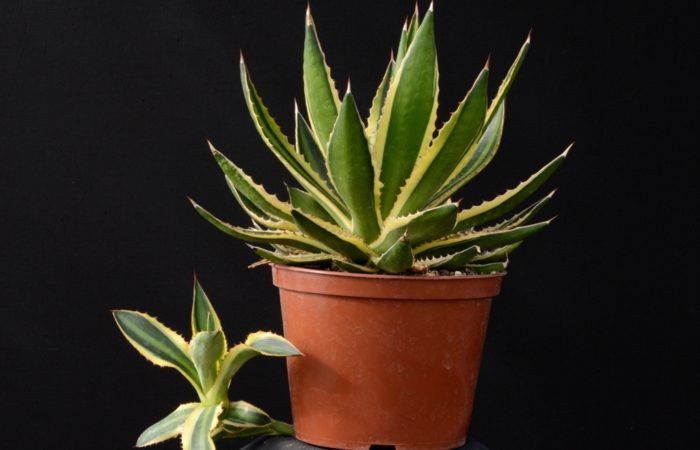

Agave
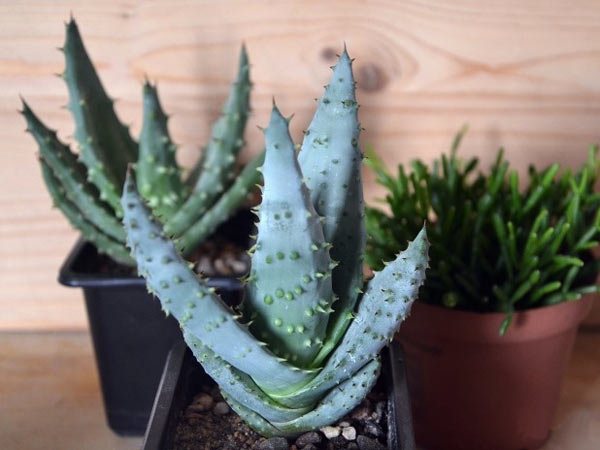

Aloe Marlota


Lithops
Orchids
Most orchids are light-loving and shade-tolerant indoor plants that live under the protection of tall trees. But there are species that require more intense lighting. These are:
- Dendrobium - an epiphytic orchid, from the root of which several shoots extend. Its leaves are elongated, they do not exceed 25 cm in length. The plant produces flower stalks with many buds. Needs bright diffused lighting with additional lighting with lamps in winter;
- Cattleya Is an epiphytic orchid that also produces many shoots. Each shoot grows 2-3 oblong leaves. The plant blooms very beautifully. Cattleya flowers, depending on the variety, have their own very unusual shape, as well as a pleasant aroma.


Dendrobium
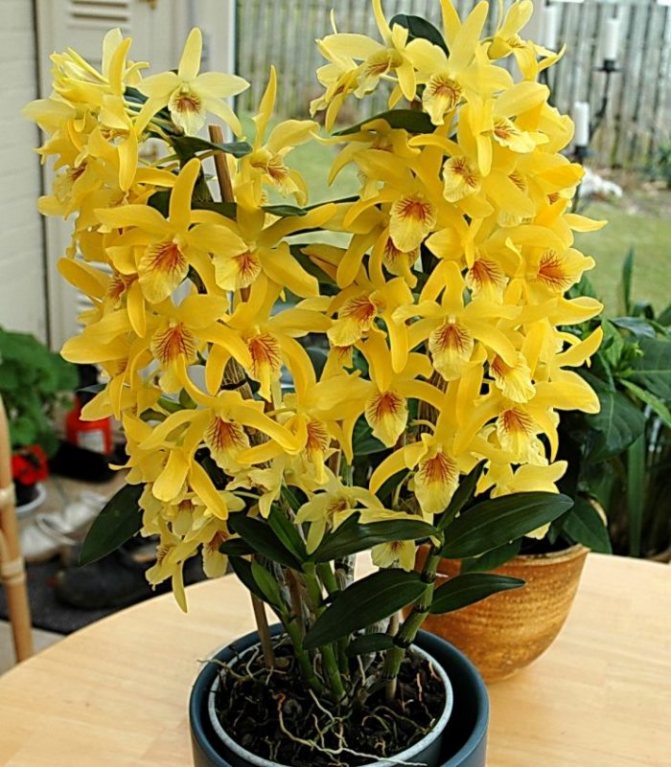

Dendrobium
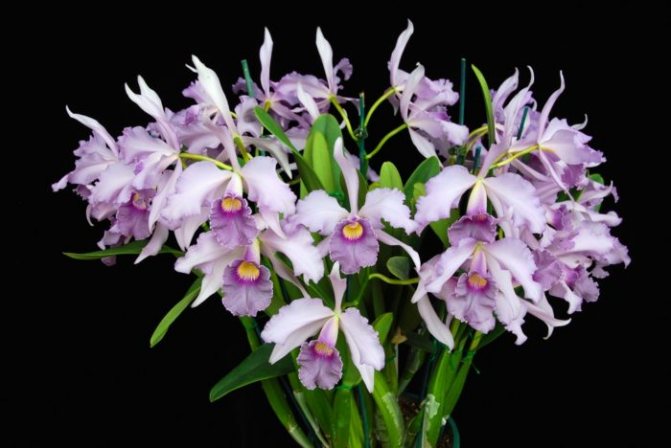

Cattleya
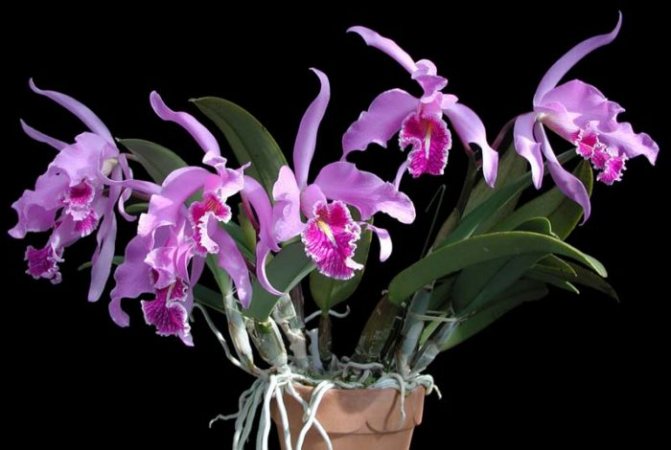

Cattleya
Palm trees
All types of palms are light-loving plants. In apartments, their compact varieties are most often grown:
- Livistona - compact fan palm. It has a single trunk on which numerous fan fronds with spiny petioles grow. The room does not exceed a height of 1.5 m, but due to slow growth it is much lower for a long time;
- Rapis - bush fan palm. Produces several trunks, similar to bamboo trunks, on which fan-shaped dissected fronds are located. It looks very lush and decorative.
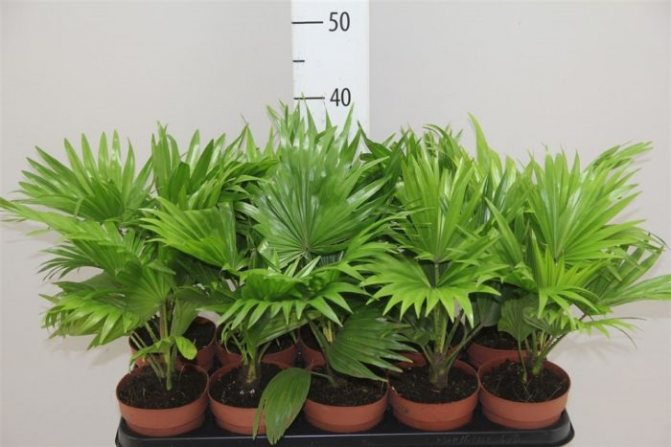

Livistona Liviston
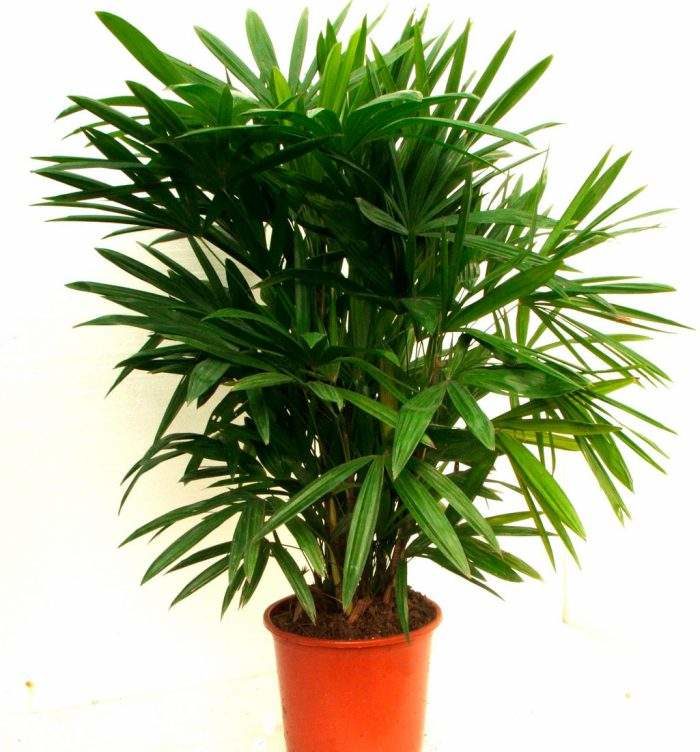

Rapis
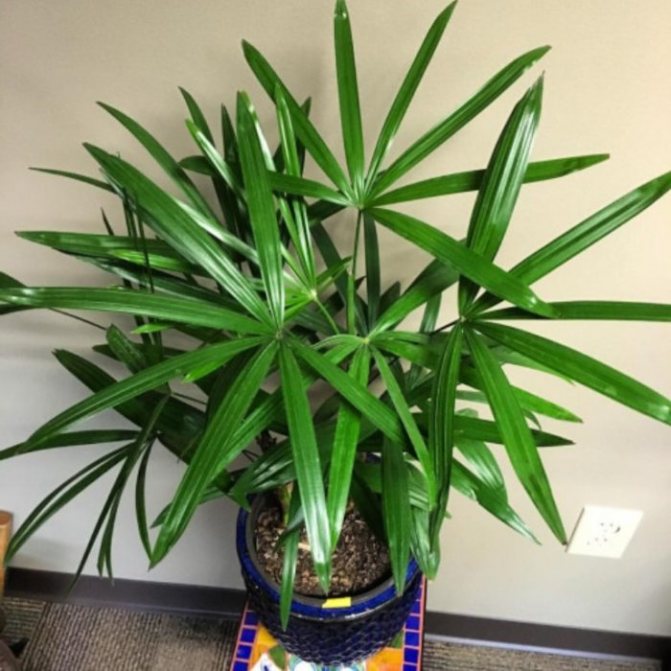

Rapis
Fruitful indoor crops
Most fruitful indoor crops are light-loving plants. Particularly strong lighting is needed for species such as pomegranate and pineapple. Indoors, dwarf pomegranate varieties are grown.
They do not exceed 1 m in height, but there are also much lower. These trees bloom and bear fruit abundantly. Need direct sunlight. In winter, it is recommended to illuminate them with lamps.
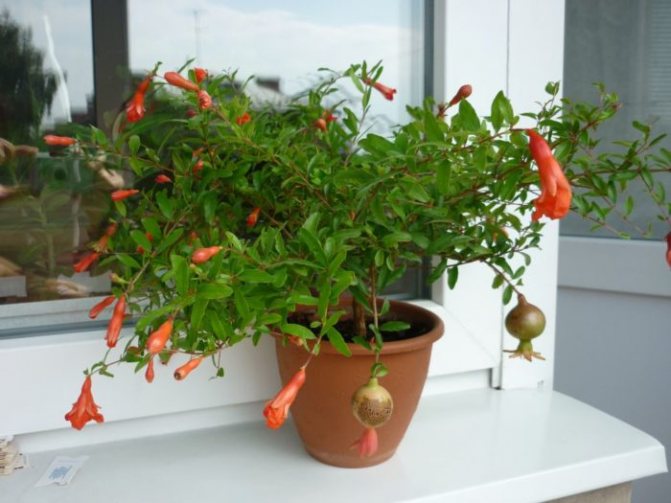

Pineapple is the only species of the bromeliad family with edible fruits. It grows and bears fruit in the apartment very willingly. No shading required. For its proper development, direct sunlight is required.It is best to place the plant on a southern or southwestern windowsill.
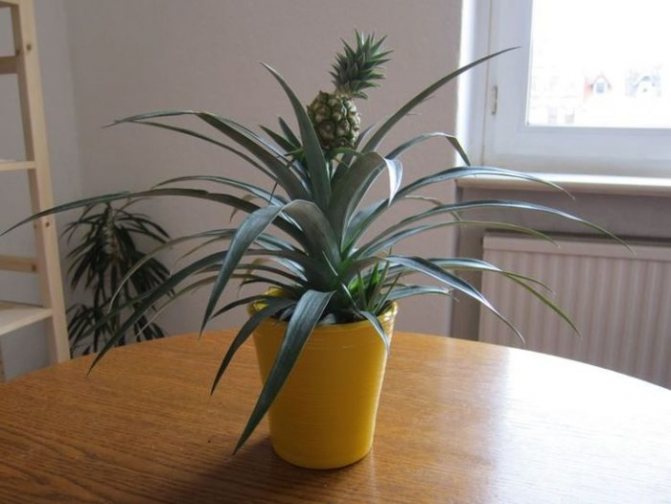

Crops that thrive in the shade
Not only indoor flowers do without a lot of light. Vegetable crops that are cultivated for human consumption also do well under the same conditions.
Some are suitable for growing on kitchen windowsills and north-facing balconies. Such an experiment will survive:
- lettuce leaves;
- spinach;
- dill;
- parsley;
- celery;
- tomatoes of "polar" varieties;
- beans.
The garden on the windowsill will not take much time and effort. Even if it is located in the shade. But the benefits of such a "bed" are obvious.


Shade-tolerant indoor plants for northern windows
There are not so many flowers suitable for growing on northern windows - this is the opinion of most lovers of home flora. And they are not much wrong. Indeed, few of the popular indoor plants are capable of blooming on the northern windows. However, there is a huge variety of decorative deciduous crops, which are in no way inferior in beauty to flowers, and sometimes even surpass them.
For a room with windows to the north - a room, hall or study, it is quite possible to pick up plants not only for the windowsill, but also those that will feel good far from the window. Some of them will be located on the floor in flowerpots, others will occupy the walls and space under the ceiling. Well, the windowsill will go to those who are least shade-tolerant.
If you start to "populate" the room with green pets from the farthest corner, gradually moving towards the windows, then the plants will be arranged approximately as follows:
1. Aspidistra
Aspidistra is a representative of the lily family, which easily acclimatizes in poorly lit places. This flower can be safely placed in the farthest corner of the northern room. Even if there are no windows at all, the plant will have enough artificial lighting.
There are forms of aspidistra with striped leaves. They are also shade-tolerant, but without light they lose their variegated color and become ordinary, green.
The rhizome of aspidistra is thick, half submerged in the ground, reminiscent of the back of a snake. Because of him, the plant got its name, which was originally a cry of "snakes there!". Moisture accumulates in the rhizome, so the flower is able to withstand several missed waterings.
The plant is undemanding to soil and moisture. The only weakness of aspidistra is that it does not tolerate dust, so its large and wide leaves growing directly from the rhizome should be regularly wiped or washed under the shower.
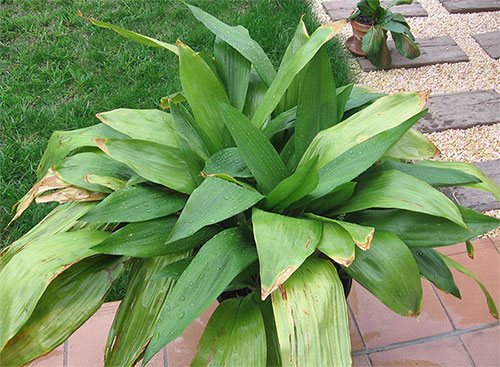

Aspidistra
2. Aucuba
A semi-shrub, rarely found in home collections. Aucuba is a relative of the common cotoneaster and is just as unpretentious. Extremely shade-tolerant, in nature it lives where no other plants can withstand.
The cultivars have showy dark green leaves with yellow splashes. Aucuba can make an excellent office plant as dry, conditioned air is good for it.
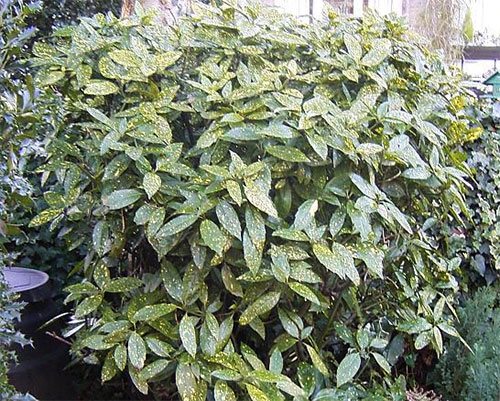

Aucuba
3. Aglaonema
Large leaves are decorated with silvery veins and are always turned towards the light. Aglaonema will grow in the depths of the northern room, while looking bright and stylish. The plant is thermophilic and demanding on the soil, does not tolerate drafts. Aglaonema is recommended to be grown for 5-7 years, and then changed, propagating with an apical cuttings. The plant is suitable for the kitchen, as it absorbs toxins released during the operation of heating equipment (vapors of formaldehyde, benzene, etc.).
Aglaonema
4. Sansevieria
The pike tail, aka Mother-in-law's tongue, was very popular in Soviet institutions. Sansevieria (sansevieria) will grow where it was placed - in deep shade or in the sun, she doesn’t care about tobacco smoke and drafts. In good conditions, it grows quickly and forms a dense "palisade"; when the soil is depleted, growth slows down and almost completely stops.Sansevier is a Spartan among indoor flowers, and looks accordingly - strict lines and "camouflage" colors.
In home flower beds, it is rarely found in our time - apparently because of the ascetic appearance. However, breeders have developed many new varieties of sansevier that deserve attention. It will be interesting to look at a group of sansevierias of different types - classic high ones together with rosette, compact and variegated ones. A pike tail with cylindrical leaves looks exotic. The latest fashion trend is a cylinder sansevier, braided into a braid.
Sansevieria
5. Scindapsus
He will willingly master the space under the ceiling. In nature, scindapsus is a creeping plant; domestic species are tied to a support, like a liana. It grows in length up to 5 meters or more. Lack of lighting for scindapsus is not a problem. He loves warm air and cannot stand drafts.
The plant requires light, fertile soil and fertilization once a month. Like many members of the aroid family, scindapsus is poisonous. Therefore, it is advisable to place the plant in a place where children and pets cannot reach it.
The most spectacular are the variegated forms of golden scindapsus, with yellow and white strokes. The lack of light does not compromise the color of the leaves. Scindapsus can live for a long time, 20 or more years.
Scindapsus
6. Ferns
In nature, ferns live under the canopy of dense forests, in a humid environment. Domestic ferns love shade and partial shade, light slightly acidic soils and moist air. Plants with graceful feathery frond leaves will fit into any design.
Traditionally, the fern is considered an office plant. In a small apartment, sprawling nephrolepis will take up too much space, but there are also compact species of ferns. For example, maidenhair, aka Venus of hair, is an excellent ampelous plant with a flowing lace of small leaves. Delicate maidenhair leaves cannot stand the sun even in small doses.
Ferns are quite demanding on air and soil moisture. In dry air, their "feathers" become coarse, covered with brown spots and eventually die off. The soil under the fern can be covered with a layer of moss - it will protect the ground from drying out, and the appearance of the plant will become more original. Ferns do not have a dormant period and prefer an even temperature and the same care throughout the year.
Like the reeds, the fern is considered a plant with dubious bioenergy. However, more often everything is explained more simply - an allergy to fern spores, as well as to reed fluff, is not uncommon.
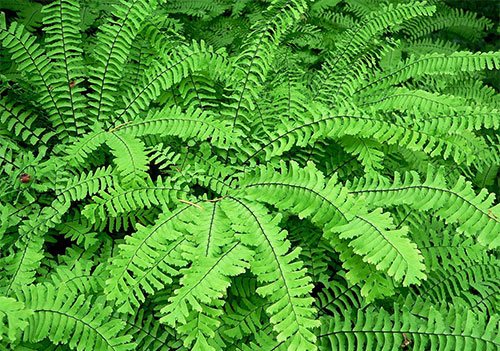

Fern
7. Zamioculcas, dollar tree
Beautiful in itself. Among other plants, the graceful contours of the zamiokulkas are lost. In addition, the flower is distinguished by its quarrelsome character: it either oppresses the neighbors of other species, or withers itself. It takes out only representatives of its own species and some palms (bokarney, chamedorea). Therefore, it is best to allocate an individual space for the dollar tree. By the way, the same is recommended by feng shui.
According to the signs, a pair of the same age zamiokulkas in identical pots on both sides of the door is a powerful talisman that attracts wealth. Signs are signs, but the fact that this is an original interior detail is one hundred percent true.
It is recommended to wipe the glossy leaves of the dollar tree more often - the brighter they shine, the stronger their "money-making" effect. The plant has nothing against removing dust from the leaves, it is good for it.
Zamioculcas can hardly be called a shade-loving plant. He prefers bright diffused light, but firmly tolerates the shadow, only slowing down growth. If you want to grow a large specimen of zamiokulkas, it is advisable to place it no more than two meters from the window, or organize a "rotational method", changing plants once a month.
When moving, it is not recommended to rotate the plants relative to the cardinal points.In order not to accidentally turn the pot "the wrong side", it is better to mark the northern direction on it in advance.
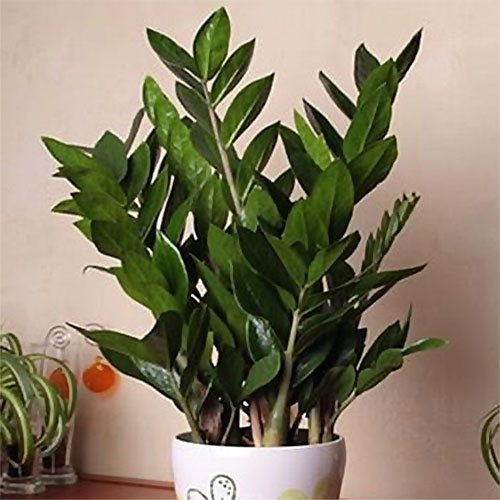

Zamioculcas
8. Anthurium
Majestic is the name of one of the types of indoor anthurium. Anthuriums look very solid and can decorate the office of a serious leader or the hall of a large company. So that the original round leaves do not lose their decorative effect, anthurium must be fertilized in a timely manner with a complex for variegated plants.
If the anthurium is placed closer to the window, then it will bloom with spectacular flowers that have only one petal, but very large and bright.
Anthurium acquired the nickname "male happiness", as even among the ancient Greeks it was considered a talisman of masculinity. Among the plants there is also "female happiness" - the graceful spathiphyllum. Both "happiness" get along well side by side and complement each other.
Spathiphyllum is a fashionable plant that is still rare in homes and requires approximately the same conditions as anthurium. Spathiphyllum blooms with white flowers resembling calla lilies.
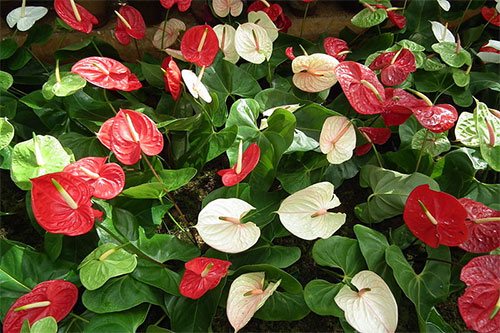

Anthurium
9. Poinsettia
The most beautiful spurge is not in vain awarded such a title. In Soviet times, poinsettia was called Scarlet Sails, and the name Christmas Star came from Europe. Poinsettia bracts are colored in different shades of red, from pink to deep purple, depending on the variety. There are forms with white and variegated "flowers", as well as double, reminiscent of roses. At home, the Mexican spurge reaches three meters in height, but tolerates pruning and formation in the form of a compact bush well.
You should cut the poinsettia carefully - the plant has not poisonous, but rather caustic juice.
The Christmas Star may well dwell at the northern windows in a cool (15-20 ° C) room. To get poinsettia blooming by Christmas, you should take care of artificially reducing daylight hours. From mid-November, during the month, the plant should be illuminated no more than 12 hours a day. Artificial light is also undesirable - the flower can be covered with a dark bag or screen.


Poinsettia
10. Orchid
Nordic windowsills can be turned into orchid paradise. The butterfly flower, phalaenopsis is the most unpretentious of them. There are a great many varieties of phalaenopsis.
In the early stages, it is better to buy orchid substrate in the store. Special fertilizers are also sold there.
So that the orchids on the north window are not too dark, you can go for a little trick - attach mirrors on both sides of the window opening, for example, from an old dressing table, or foil. A homemade reflector will at least double the amount of scattered light.
Blooming phalaenopsis can delight not only their owners. Recently, it is very fashionable to give fresh flowers in pots. A do-it-yourself orchid is a wonderful gift for any holiday.
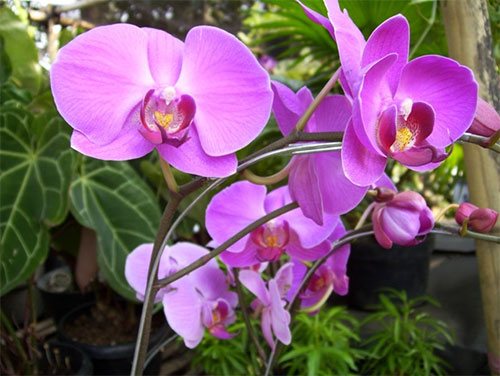

Orchid
"Out of competition". About those plants that were not included in the list
Of course, there are not ten shade-tolerant plants, but much more. The above species are distinguished either by their particular unpretentiousness, like aspidistra or sansevier, or decorativeness, like poinsettia. A factor such as the fashion for indoor flowers should also be taken into account.
Plants with a thickened trunk are in trend today. Of the shade-tolerant ones, one can call the bent cycad, it is also the cicas - a plant with luxurious flowing feathery leaves. A large evergreen tree, reminiscent of a palm tree, but more squat. Ideal plant for hallways and spacious rooms. A spectacular cycad can be planted as a single plant or be the centerpiece of a group.
It is possible that in a few years hamedorea (bamboo palm) will be at the peak of popularity. This is the most shade-tolerant of the palms. It looks very elegant and is suitable for both the living room and the office.
As a rule, shade-loving plants have large dark leaves.For contrast, you can place a small-leaved selaginella (homemade lamb) or an unpretentious saltworm next to it. Forming a curly carpet, solirolium (gelksina) will look good as a ground cover plant in large pots.
Ficuses are timeless classics. Ficus and canary are the personification of a quiet and peaceful life in a small town of pre-revolutionary times. The Bengal ficus became the symbol of the family nest - planted once, it passed from generation to generation. In nature, ficuses live for 500 or more years, and at home - while there is someone to look after them.
Benjamin's ficus won the love and recognition of flower growers - the plant does not require special lighting and decorates any interior. And at the same time it cleans the air in the room, including the smell of tobacco. Ficuses are different - tree and ampelous, liana-like and dwarf. Through the efforts of breeders, variegated varieties of ficuses have been bred. Absolutely all ficuses are suitable for growing near northern windows.
Begonias do not need advertising - their decorative leafy forms can be found in almost every home and institution. If you want to diversify your collection, you can pay attention to new hybrids, which are produced annually in dozens and even hundreds.
Monstera is made for offices. Its bizarre leaves diversify the austere setting (and hide the solitaire monitor from the eyes of the bosses ...). It's so nice to enter from the summer heat into the gloomy and cool hall - and see there a fountain or micro-reservoir surrounded by monster thickets ...
Saintpaulias are very "home" plants, traditional inhabitants of northern windowsills. A child can cope with the cultivation of uzambar violets, and a huge number of varieties will save from monotony. The advantage of these plants is their compact size. If the apartment has a problem with free space, then Saintpaulia is the best candidate for the place of a pet.
*** Green pets living in the shade should be given attention and the lack of lighting should be compensated for by soil fertility, timely transplantation, fertilization and careful care. It is advisable to rearrange flowers in the back of the room for at least 2-3 months a year closer to the window - no matter how hardy the plant is, it still needs sunlight.
How to choose a plant that requires minimal maintenance
You are a big fan of flowers, but you are afraid to start cultivating green, blooming and fragrant beauty at home, since you spend most of your time at work, while you often travel on business trips. In this case, there is also a way out: opt for unpretentious indoor plants, among which there are indoor flowers for every taste: flowering, decorative leafy, bromeliad, fruit and berry and ampelous.
Let's take a closer look at the top of the most popular colors that require minimal maintenance:
Sansevieria, or mother-in-law's tail, loves dark and well-lit dry rooms. Only when the root system becomes cramped is it placed in a larger container. It does well without fertilizing. In winter, you shouldn't bother him at all.


Chlorophytum is an unpretentious, useful creature that is not afraid of either drought or excessive moisture, or shade or sun. But there is no better green specimen capable of absorbing carbon monoxide.
Hoya carnosa, or wax ivy, is one of the flowering ampelous specimens that can do without water for several months, getting nourishment from thick glossy leaves. It may not feed or transplant for a very long time. If you regularly pamper him with your attention, it will thank you with exuberant color.
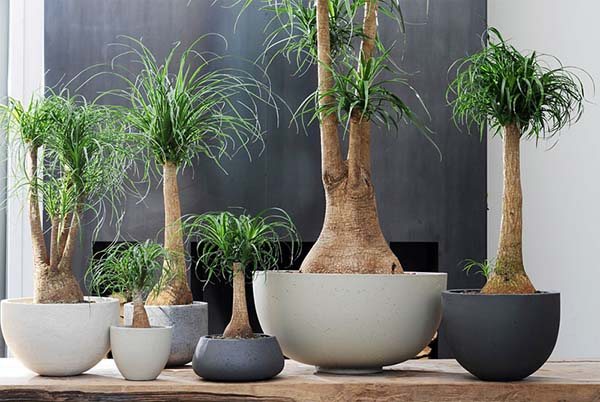

Nolina, or bokarnea, is a desert dweller with a barrel that looks like a bottle. Decorators often use its original look when decorating the interior. To form a regular large base (caudex), the plant requires occasional, abundant watering.It is enough to plant it in a loose soil not rich in useful microelements and water it thoroughly once a month. Ideal for people who are often forced to leave home for various reasons.
Kalanchoe is a plant-healer, prefers rare watering, grows superbly on windows of the south / north sides. There are many different hybrids that delight the eye with colorful paints.
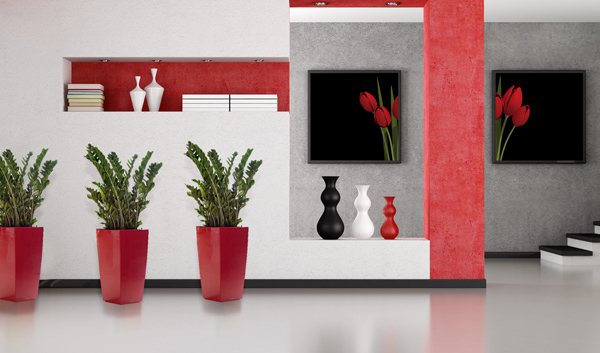

Zamioculcas -exot perfectly takes root in poorly nutritious loose soil, in the shade and in the light. Experienced growers advise choosing cactus / violet soil mixed with sand.
Spathiphyllum - the creation of year-round flowering, perfectly tolerates a lack of moisture. Does not accept frequent transplants. The only condition is a warm room, as it does not tolerate drafts.
Scindapsus is an ampelous species with round / heart-shaped green leaves with yellowish blotches. Well suited for landscaping walls. It removes harmful substances from the air, tolerates shade well, does not require much maintenance and does not react to sudden temperature changes.
The list is endless. This category includes dracaena, fern, calathea, philodendron, aglaonema, aspidistra. Do not forget: simplicity does not mean a complete lack of care and watering. Each green creature, with an attentive attitude towards itself, will respond with good growth, lush flowering or rich greenery. Unpretentious flowers are a great start for beginners in floriculture.

